Finding the right Drupal development agency is critical to building a website that not only looks great but performs seamlessly. A strong Drupal partner ensures your site is scalable, secure, and tailored to your business needs. Choosing the right agency impacts everything from custom module development to user experience and long-term support, making the difference between a website that succeeds and one that falls short.
Why Choosing the Right Drupal Agency Matters
Working with an inexperienced Drupal development company can lead to delays, poor architecture, security vulnerabilities, and a site that’s difficult to maintain. On the other hand, an experienced agency brings deep expertise in custom modules, integrations, and UX design, ensuring your site is reliable, scalable, and aligned with your business goals.
Key Takeaways:
- Expert Drupal development agencies increase site performance and maintainability.
- Strong branding and functional alignment reduce long-term risks.
- Specialized knowledge supports integration with third-party tools and systems.

Key Capabilities to Look For
Custom Module Development
Custom modules extend Drupal’s capabilities to meet unique business requirements. Look for agencies with a proven track record in building modules that enhance workflow, automate processes, and integrate seamlessly with other platforms.
Drupal Architecture & Scalability
A site built on solid Drupal architecture ensures your platform can grow with your business. Evaluate agencies on their experience designing scalable, flexible, and maintainable solutions.
UX & Design Expertise
A visually appealing, intuitive website keeps visitors engaged. Agencies with strong UX and design skills create experiences that are accessible, responsive, and aligned with your brand identity.
Security & Compliance
Drupal security is critical for protecting user data and meeting industry standards. Agencies should demonstrate knowledge of best practices, secure coding, and regulatory compliance.
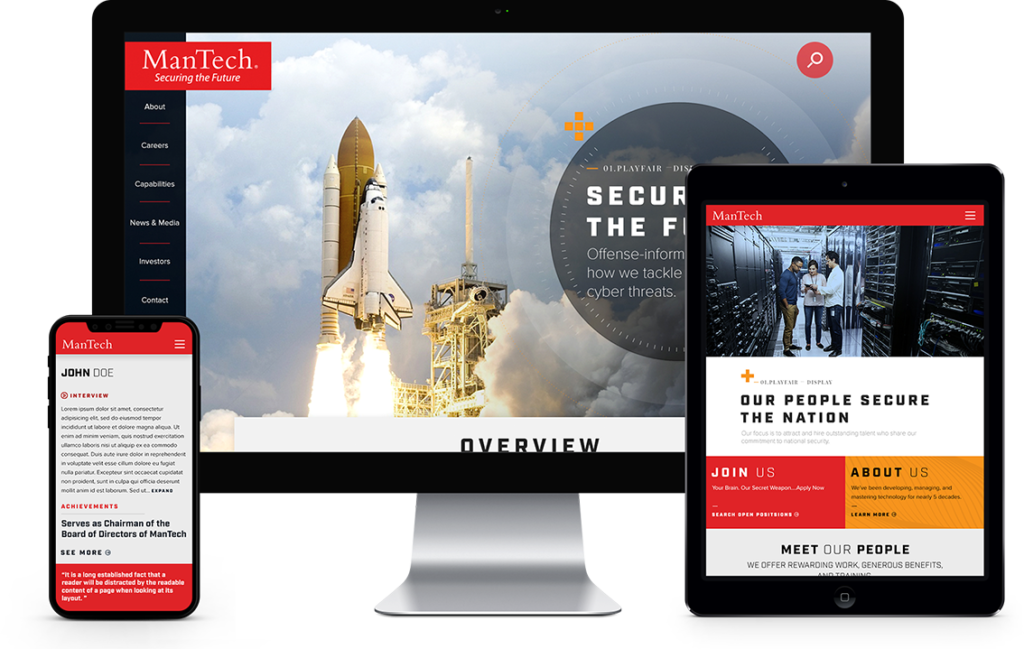
Assessing Agency Experience and Track Record
Before selecting a Drupal development company, review portfolios and case studies to gauge relevant industry experience. Client testimonials and long-term partnerships provide additional insight into reliability and project success. Agencies that demonstrate repeated success with similar projects are more likely to deliver predictable outcomes.
Ongoing Support and Maintenance
Websites require ongoing care, even after launch. Your Drupal partner should offer continuous updates, module maintenance, and performance monitoring. Reliable support ensures your site stays secure, fast, and adaptable as your business evolves.
Evaluating Communication and Collaboration
Effective communication is essential to project success. Agencies should provide clear timelines, regular updates, and agile collaboration. Choosing a partner who is transparent and proactive reduces misunderstandings and ensures your project stays on track.
Cost Considerations and Value Assessment
Pricing models vary between hourly rates and fixed project costs. At Bluetext, we don’t bill by the hour, so clients receive unlimited time and revisions on all deliverables. While cost matters, it’s equally important to consider long-term value, including scalability, performance, and reduced maintenance needs. Partnering with a higher-quality Drupal agency can save time, money, and stress over the life of your site.
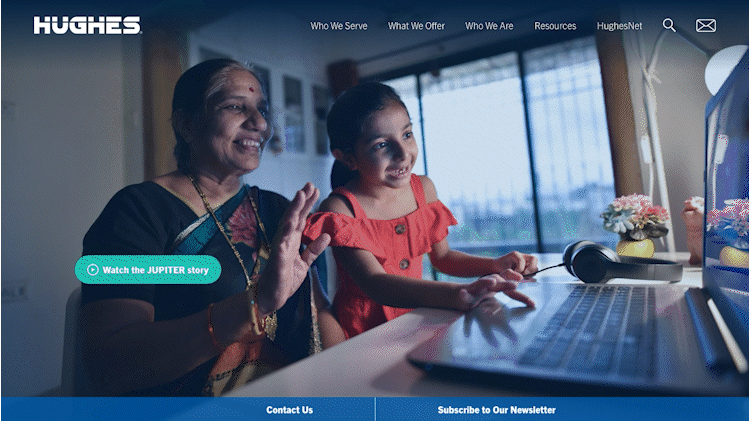
Next Steps for Your Drupal Project
Selecting the right Drupal development company ensures your website is secure, scalable, and aligned with your business goals. Take time to evaluate capabilities, portfolio, communication style, and long-term support offerings. Contact Bluetext to discuss your Drupal development needs and find the right partner for your business.
In today’s competitive procurement landscape, first impressions online matter more than ever. Agency evaluators rarely rely solely on in-person meetings or phone calls—they start their research online. From visiting your website to downloading PDFs or Googling your name, buyers are evaluating your credibility, expertise, and relevance before they ever pick up the phone.
Understanding what evaluators are really looking for—and optimizing every touchpoint—can make the difference between being shortlisted or overlooked. This blog explores how to align your digital presence with buyer expectations and build trust at every stage of the procurement process.
Why Your Online Presence is Critical for Procurement
Procurement evaluators rely heavily on digital research to save time and validate potential vendors. Your website, online profiles, and downloadable content are often their first exposure to your organization. A polished, informative, and credible digital presence can establish trust immediately. Conversely, outdated information, missing details, or poor navigation can raise red flags and push buyers toward competitors.
The key is ensuring that every online interaction answers a buyer’s questions efficiently and reinforces your organization’s professionalism and expertise.

What Buyers Check First: Websites and Online Profiles
When evaluators visit your site or online profiles, they’re looking for clarity, credibility, and relevance. Some of the top elements they notice include:
- Clear messaging: What you do, who you serve, and why it matters should be immediately obvious.
- Client examples and case studies: Demonstrates experience and past success.
- Certifications and awards: Signals trustworthiness and compliance.
- Navigation and structure: Information should be easy to find without frustration.
Missing or inconsistent information can quickly erode confidence. A well-structured website gives evaluators the reassurance they need to continue engagement.
Downloadable Content: PDFs, Case Studies, and Whitepapers
Many evaluators download PDFs, whitepapers, and case studies as part of their research. These materials should provide concise, actionable insights into your capabilities. Key considerations include:
- Clarity: Avoid jargon and keep content focused on what matters to the buyer.
- Visual appeal: Use graphics, charts, and formatting that make content easy to scan.
- Results-focused: Highlight measurable outcomes and past successes.
Strong downloadable content helps buyers make informed decisions quickly and reinforces your credibility. Weak or overly complex documents, on the other hand, can be a barrier to engagement.
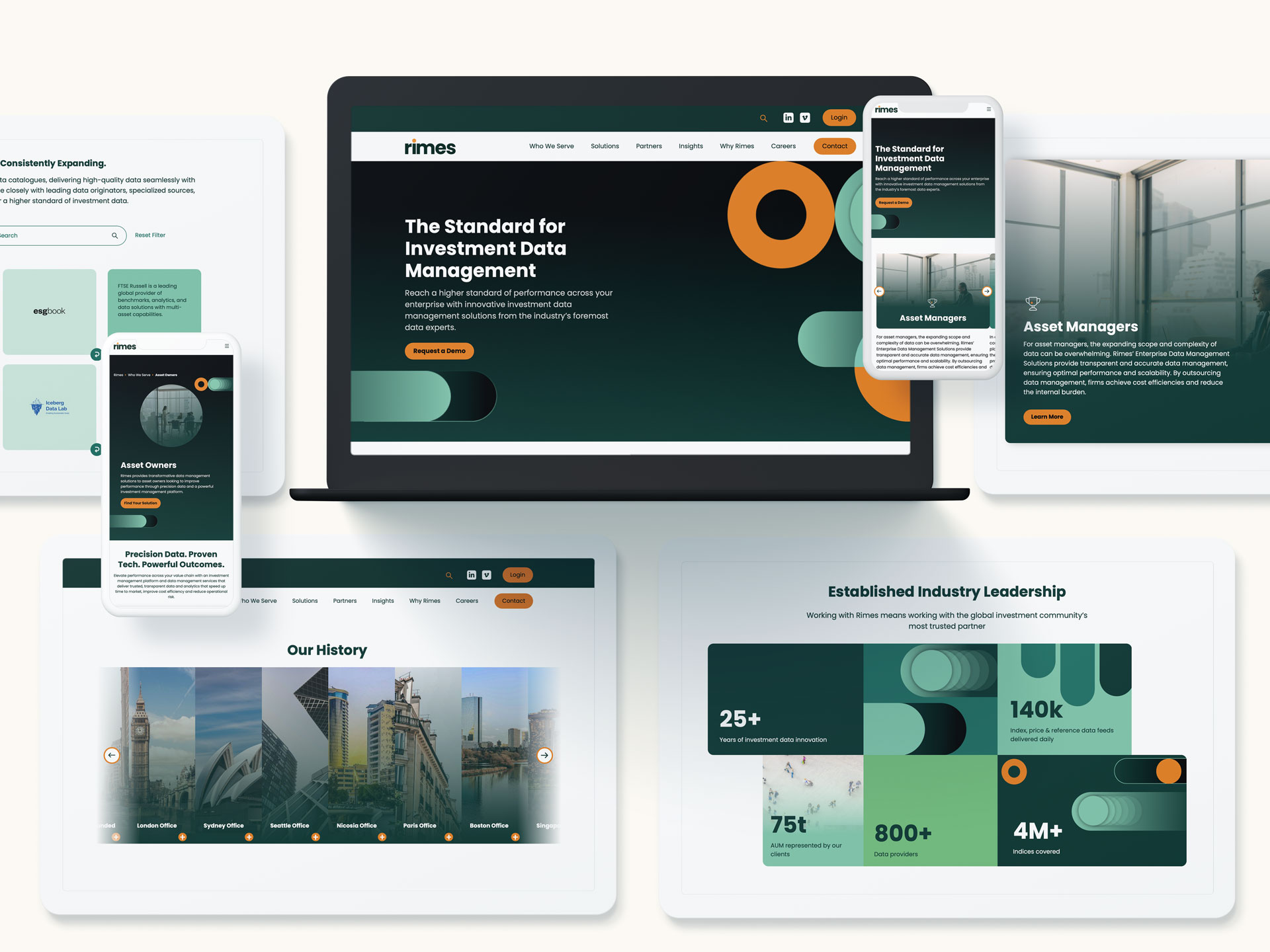
Search Behavior: Googling Your Name and Brand
Evaluators often research your brand and key leaders online. They look for thought leadership, news mentions, and industry recognition to gauge expertise and reputation. This makes SEO, AEO (Answer Engine Optimization), online reviews, and consistent branding more important than ever.
Common pitfalls include outdated press releases, missing leadership bios, or inconsistent messaging across channels. Maintaining accurate, accessible, and positive online visibility ensures evaluators find credible and relevant information when they search for you.
Evaluators’ Key Priorities in the Procurement Journey
Procurement teams generally focus on four main priorities during their online research:
- Trustworthiness: Can they rely on you to deliver on promises?
- Evidence of expertise: Do you have the experience and capability to meet their needs?
- Ease of access to information: Can they quickly find answers to critical questions?
- Alignment with their goals: Do your solutions or services match their agency or organizational priorities?
Aligning your digital presence with these priorities ensures evaluators can confidently move forward with your organization.
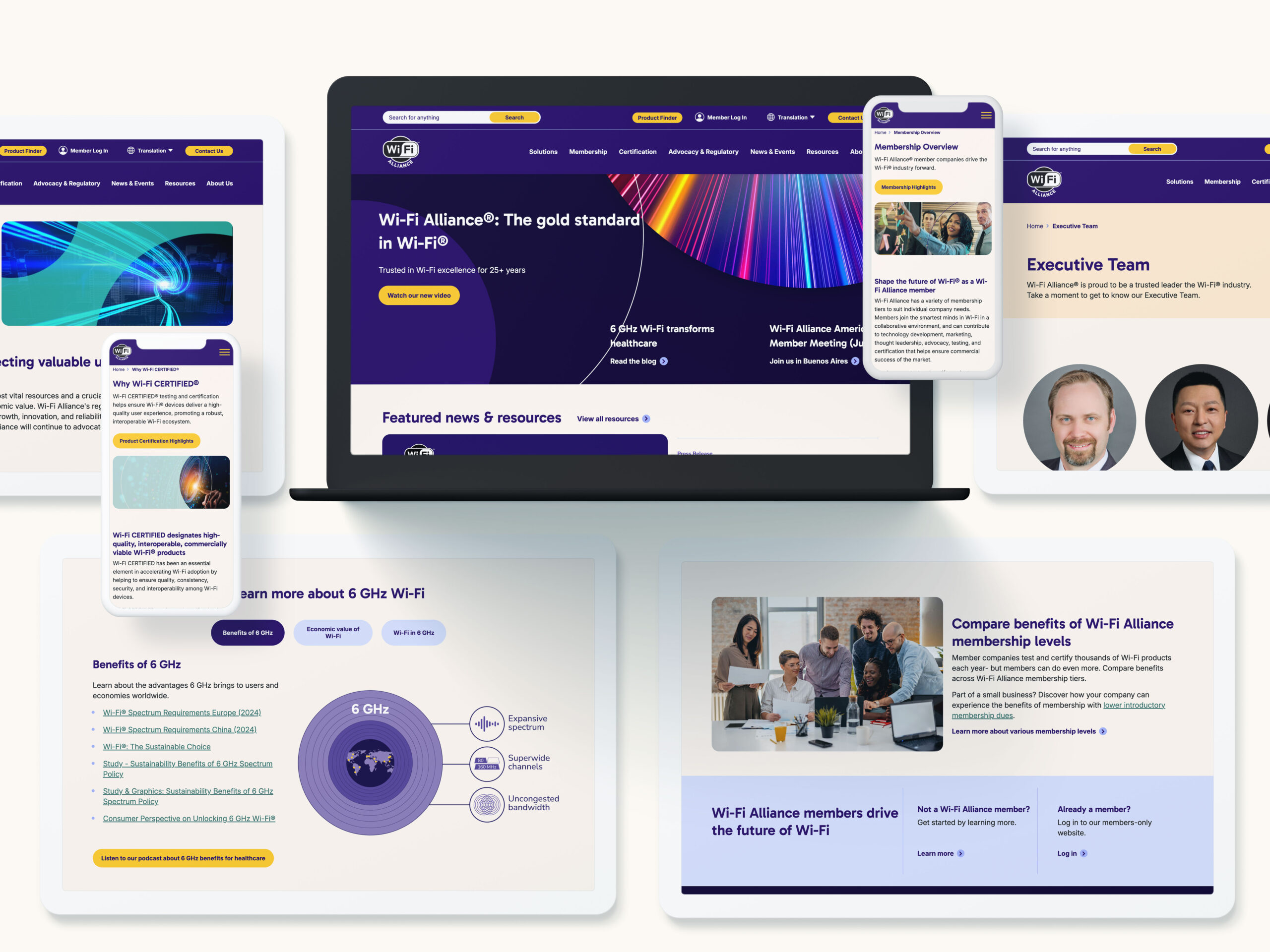
Aligning Your Digital Experience With Buyer Expectations
To meet buyer expectations, organizations should:
- Audit websites regularly: Ensure messaging, client examples, and leadership bios are current.
- Optimize downloadable content: Keep PDFs concise, visually clear, and results-focused.
- Invest in SEO and thought leadership: Ensure your organization appears authoritative in search results.
- Maintain consistent branding: Across websites, social media, and online documents.
By proactively optimizing every touchpoint, you reduce friction in the procurement process and increase your chances of being shortlisted.
Final Takeaway
Every online interaction shapes a buyer’s perception and influences procurement decisions. By understanding what evaluators look for—websites, downloadable content, and search visibility—you can create a digital presence that builds trust and drives engagement.
Ready to strengthen your procurement-focused digital presence? Contact Bluetext to ensure your website, content, and online profiles meet buyer expectations and set your organization apart in competitive evaluations.
In the fast-paced world of digital marketing, first impressions are formed in milliseconds. These split-second judgments often determine whether a visitor stays on your site, explores your services, or leaves. People decide emotionally first and rationally second. That is why thoughtful design, including colors, shapes, and layout, is more than decoration. It is strategic.
Designing with emotion means intentionally crafting visual experiences that build trust, guide perception, and create urgency. When done well, it can subtly influence buyer behavior and move prospects from curiosity to conversion. Let’s explore how colors, curves, and layout psychology help brands connect, convince, and close deals.
The Psychology of First Impressions
Research shows users form opinions about a website in under a second. That first glance tells them if a brand is credible, professional, and worth their time. These impressions are emotional as much as they are visual.
Visual cues like color, contrast, and spacing communicate confidence, clarity, and competence. In B2B, where decisions are complex and high-stakes, a website that evokes trust and clarity can make the difference between a lost lead and a signed contract.
Design that resonates emotionally does more than look good. It persuades.
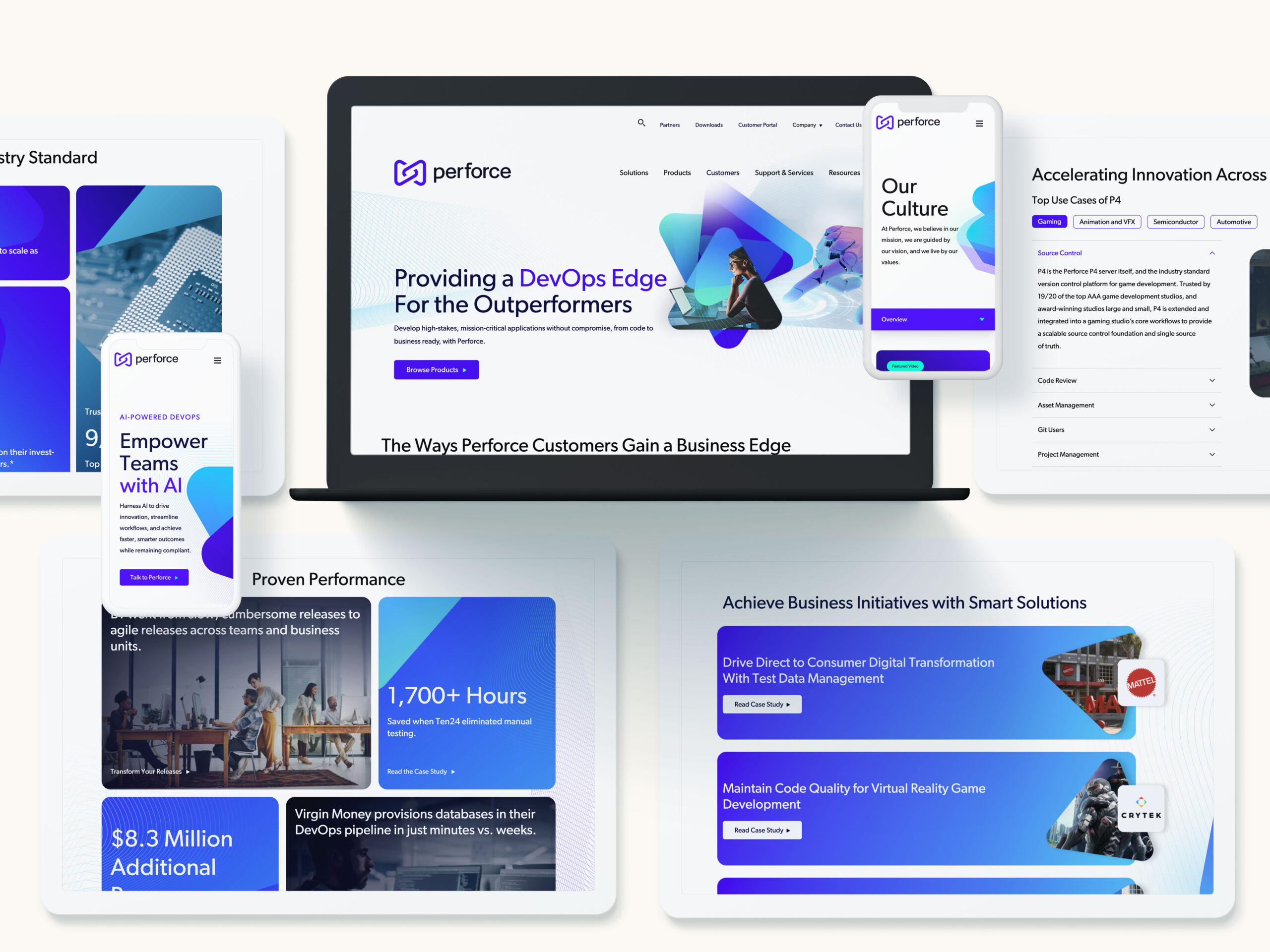
The Language of Color: Building Trust, Urgency, and Desire
Colors carry psychological associations that influence perception.
- Blue signals trust, stability, and professionalism. It works well for finance, tech, and telecommunications.
- Red creates urgency and draws attention, making it ideal for calls to action or limited-time offers.
- Green conveys growth, balance, and reliability. It is often used by sustainability-focused brands or B2B tech companies.
It is not just the choice of color, but how it is used. Contrast, saturation, and balance guide the eye and reinforce hierarchy. Choosing colors that align with your goals helps visitors feel confident, focused, and ready to take action.
The Science of Shape: Why Curves Feel Safer Than Corners
Shape psychology is powerful but often overlooked. Rounded edges and curves are perceived as approachable, friendly, and safe. Sharp angles communicate precision, assertiveness, or caution.
Buttons, icons, and content containers with curves can subtly encourage interaction. Tech companies like Apple and Google use rounded designs to suggest simplicity, reliability, and accessibility. Curves reduce friction and make digital experiences feel intuitive.

Layout, Space, and Flow: Designing for Calm and Clarity
Design is more than color and shape. Structure matters. White space, visual hierarchy, and symmetry guide attention and set emotional tone.
Cluttered pages can cause frustration. Balanced layouts signal professionalism and calm. Proper spacing highlights important content, guides the eye naturally, and makes your messaging easier to digest. Aligning layout with the buyer journey creates a subconscious flow that improves engagement.
Designing for B2B Audiences: Emotion Meets Authority
Some brands think emotional design only works for consumer audiences. The truth is decision-makers in B2B are human, and humans respond to emotion.
Subtle cues, like accent colors, consistent shapes, and clean layouts, communicate authority and reliability. For tech audiences, combining bold structures with approachable accents conveys professionalism while remaining human. Strategic emotion makes complex offerings feel accessible without reducing credibility.
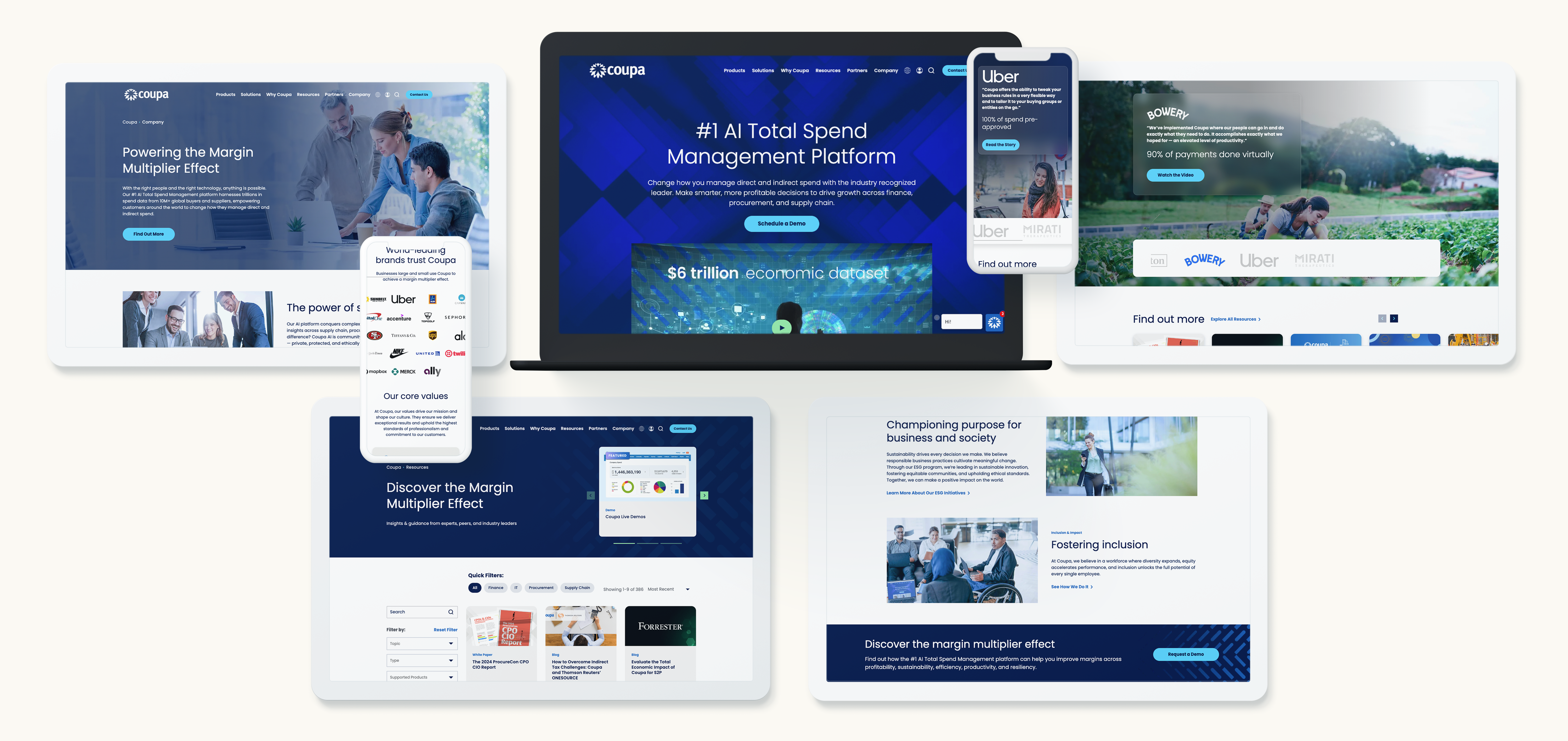
From Aesthetics to ROI: Measuring the Emotional Impact of Design
Emotional design can be measured through engagement metrics. Key indicators include:
- Bounce rate and time on page
- Form submissions and content downloads
- Scroll depth and navigation patterns
- Brand recall from surveys or heat maps
User testing and analytics help validate which design choices foster trust and guide action. Well-crafted design becomes not just creative but an engine for conversion.
Designing with Emotion and Intention with Bluetext
Design that sells is intentional. Every color, curve, and layout choice should align with the emotions you want your audience to feel and the actions you want them to take.
At Bluetext, we combine behavioral insight, design strategy, and creative execution to craft experiences that engage emotionally and perform strategically. From color psychology to motion design, we help brands create digital experiences that look great and close deals.
Ready to design with purpose and emotion? Contact Bluetext to build experiences that inspire trust, guide perception, and drive measurable results.
If you’re a government contractor, you know SAM.gov is a must. It’s the gateway to doing business with the federal government, the baseline requirement for eligibility, and a compliance necessity. But here’s the hard truth: being listed on SAM.gov alone does not make you a competitive strategy. In today’s federal procurement landscape, a modern digital presence is just as critical as your contract vehicles.
Your website, social presence, and digital credibility often speak louder than a registration number. Procurement officers, prime contractors, and agency decision-makers increasingly research vendors online before reaching out. Simply put, SAM.gov tells them you exist—but your digital brand tells them why they should care.
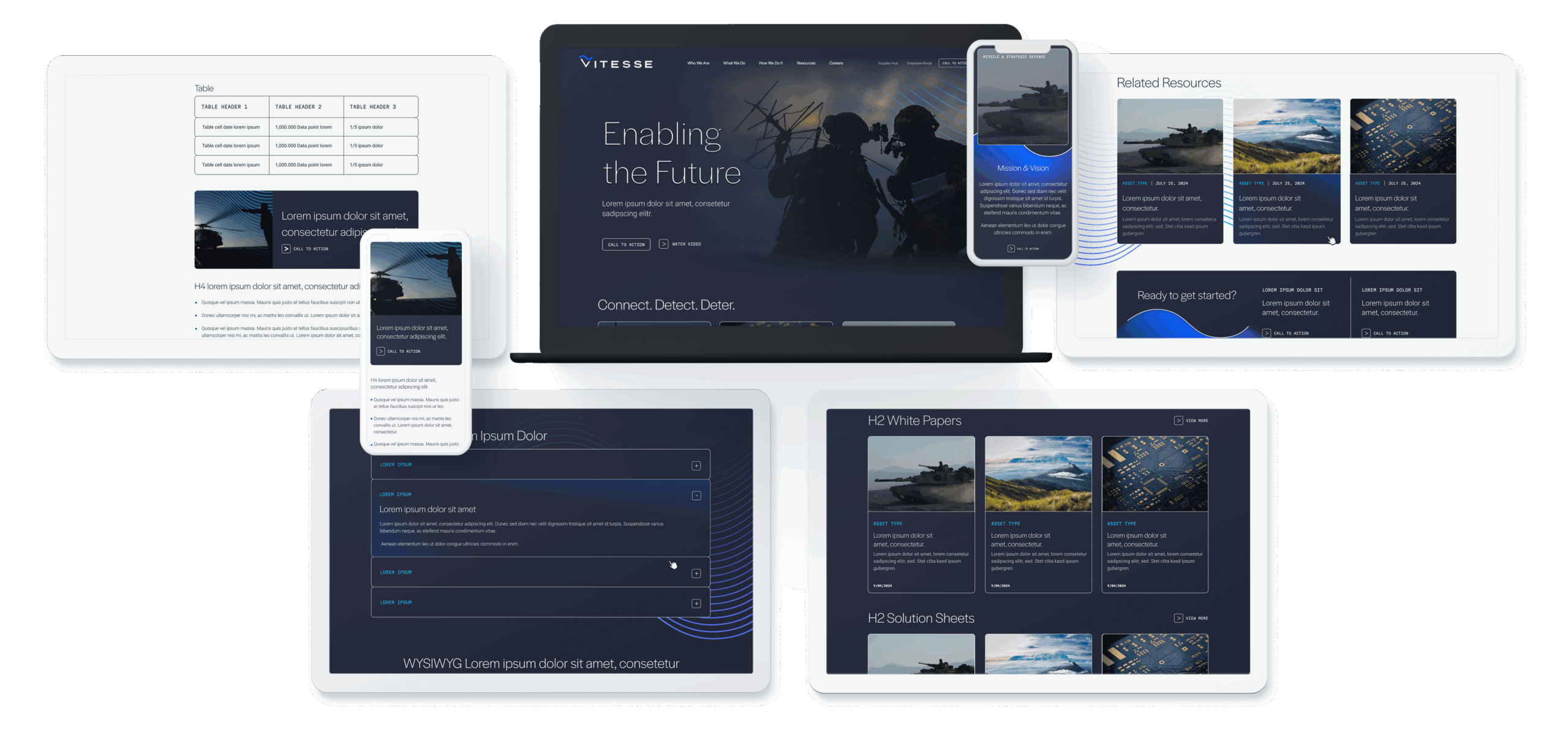
The Modern GovCon Buying Journey Has Changed
The federal buying journey has evolved. Buyers don’t wait until an RFP drops to assess potential partners—they research online, attend virtual events, and review thought leadership long before formal procurement processes begin.
Consider this: more than 70% of B2B buyers—federal included—conduct online research to vet potential vendors. They evaluate websites, social media profiles, and digital content to judge credibility and capability. A contractor with a strong digital footprint signals readiness, expertise, and reliability in ways that a SAM.gov listing simply cannot.
In essence, the playing field has shifted. Eligibility is required. Visibility and trust are differentiators.
The Problem with Relying on SAM.gov Alone
SAM.gov is static. It lists entities and contract vehicles but does not communicate value propositions, innovation, or performance history. Agencies don’t use SAM.gov to discover new vendors—they use it to verify credentials.
This leaves a gap: contractors who rely solely on SAM.gov may be invisible during early research stages. Two vendors could hold identical GWACs or IDIQs, yet the one with a polished website, active thought leadership, and consistent social presence will stand out. The question isn’t whether you’re compliant—it’s whether you’re compelling.
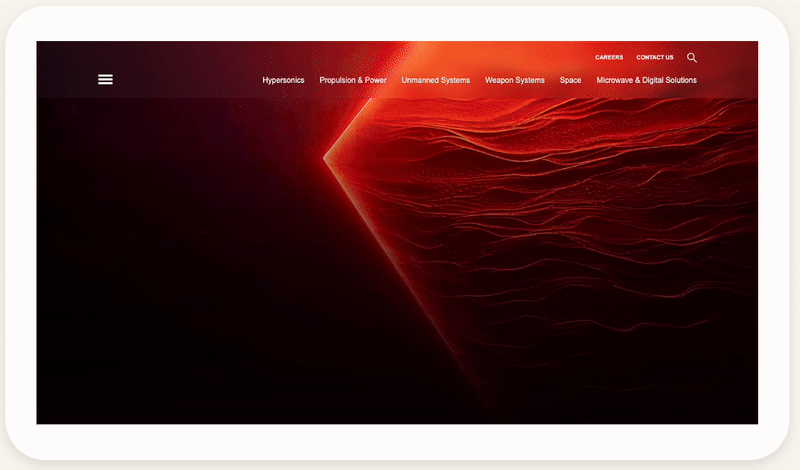
Digital Best Practices for GovCon Brands
Investing in your digital presence is no longer optional. Here’s how contractors can elevate their digital strategy:
1. Modernize Your Website
Think of your website as your digital contracting office. It should be clear, credible, and user-friendly. Include:
- Capabilities statements and case studies
- Contract vehicles and certifications
- Team and leadership profiles
- Mobile-friendly design and Section 508 compliance
A strong site demonstrates professionalism and operational readiness, making it easier for decision-makers to trust you.
2. Tell a Clear Brand Story
Your brand story sets you apart. Focus on:
- Mission alignment and impact
- Differentiators beyond contract numbers
- Visuals and messaging tailored to federal audiences
A concise, compelling narrative makes your brand memorable and positions you as a thought leader, not just a vendor.
3. Build a Thought Leadership Engine
Content is credibility. Develop insights on procurement trends, modernization efforts, or technical innovations. Publish blog posts, white papers, or LinkedIn articles that show your expertise. Position executives as industry voices to build trust and influence early-stage research.
4. Leverage SEO and Paid Media Strategically
Optimized digital content helps buyers and partners find you. Focus on:
- Keywords relevant to federal procurement and your niche (e.g., “cybersecurity modernization contractor”)
- Targeted paid campaigns to reach agency decision-makers and prime contractors
- Conversion tracking tied to forms, downloads, or event registrations
SEO and paid media extend your visibility beyond SAM.gov, helping you compete for attention where research starts.
5. Strengthen Digital Credibility
Consistency matters. Maintain a professional brand across your website, LinkedIn, industry directories, and proposals. Highlight contract vehicles, certifications, and partnerships. Incorporate testimonials or case summaries to validate performance. Every touchpoint should reinforce that your brand is capable, reliable, and mission-focused.

Measuring Digital Maturity in GovCon Marketing
Digital success is measurable. Key metrics include:
- Website traffic and engagement from federal IP ranges
- Inbound inquiries from teaming partners or agencies
- Search visibility for capability-specific terms
- Content engagement and social impressions among government audiences
Analytics not only track outcomes—they inform iteration. By understanding how your digital presence resonates, you can optimize content, adjust messaging, and enhance brand impact.
Visibility That Wins Beyond SAM.gov
A strong digital presence translates to tangible benefits:
- Attract more teaming partners: Primes prefer vendors who look ready and capable online.
- Stand out in market research: Agencies notice brands that demonstrate expertise through thought leadership and compelling messaging.
- Shorten capture cycles: Clear, accessible, and credible content reduces friction during evaluation and decision-making.
Investing in digital strategy ensures that your SAM.gov listing becomes more than compliance—it becomes the starting point for a living, breathing brand that signals competence and trustworthiness.
How Bluetext Helps GovCon Brands Stand Out
At Bluetext, we specialize in branding and digital marketing for government contractors. We help organizations:
- Refresh their brand identity and positioning
- Build websites that communicate capabilities and credibility
- Develop thought leadership programs and content strategies
- Optimize digital visibility for federal audiences
Our clients don’t just meet eligibility requirements—they stand out, engage buyers early, and compete effectively in a crowded federal marketplace.
Ready to go beyond SAM.gov? Contact Bluetext to modernize your digital presence and position your brand for growth in government contracting.
TL;DR — The 6 Big Takeaways
- “Vibe working” captures the shift from rigid productivity toward intuitive and emotionally intelligent collaboration.
- Modern brands succeed when they focus on coherence, emotion, and energy instead of consistency alone.
- In design, the real competition is not features or pixels but how an experience feels.
- Creative teams are evolving from rule keepers to vibe curators, shaping rhythm, tone, and feeling across every touchpoint.
- Fast design tools now make it possible to prototype moods and test emotional resonance at scale.
- The next evolution is building vibe systems that manage brand emotion in real time across all channels.
From Productivity to Presence: The Rise of Vibe Working
Across creative industries, a new language is replacing the old talk of workflows and deliverables. The phrase “vibe working” describes a style of collaboration that relies on intuition and rhythm instead of rigid process.
Rather than grinding through linear steps, teams now move through projects like musicians in a jam session, improvising and refining until everything feels right. The rhythm, tone, and flow of work have become as important as the final output.
This cultural change marks the end of the optimization era and the start of an intuition era where sensitivity and emotional awareness define creative excellence.
The Emotional Economy of Brands
Branding used to be about clear messaging. Today it is about mood.
Consumers no longer just buy a product or service. They connect with a feeling that a brand evokes. Apple feels like minimalist calm. Liquid Death channels skate-punk energy. Nike moves like a heartbeat in motion.
As industries become more crowded and features converge, emotion becomes the key differentiator. Brands that master emotional coherence across every channel — website, packaging, experience, tone, and visual rhythm — build stronger loyalty and trust.
The most advanced marketing teams now describe brand identity using sensory terms such as rhythm, warmth, and flow. They are not designing assets; they are designing atmospheres.
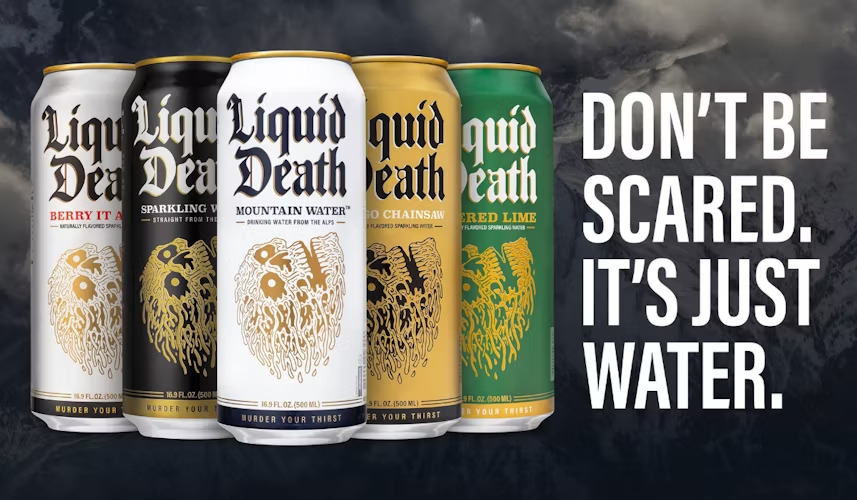
Vibe Design: When UX Feels Human Again
User experience once focused only on usability. In the new creative landscape, it has become an act of emotional choreography.
The best digital experiences do not simply guide behavior; they reflect human emotion. Duolingo’s playful messages, Spotify’s personalized playlists, or Apple’s subtle touch feedback all build emotional trust through small, intentional gestures.
Vibe design treats typography, motion, and microcopy as instruments in an emotional orchestra. Each note matters. The result is not just functionality but a connection that feels alive and human.
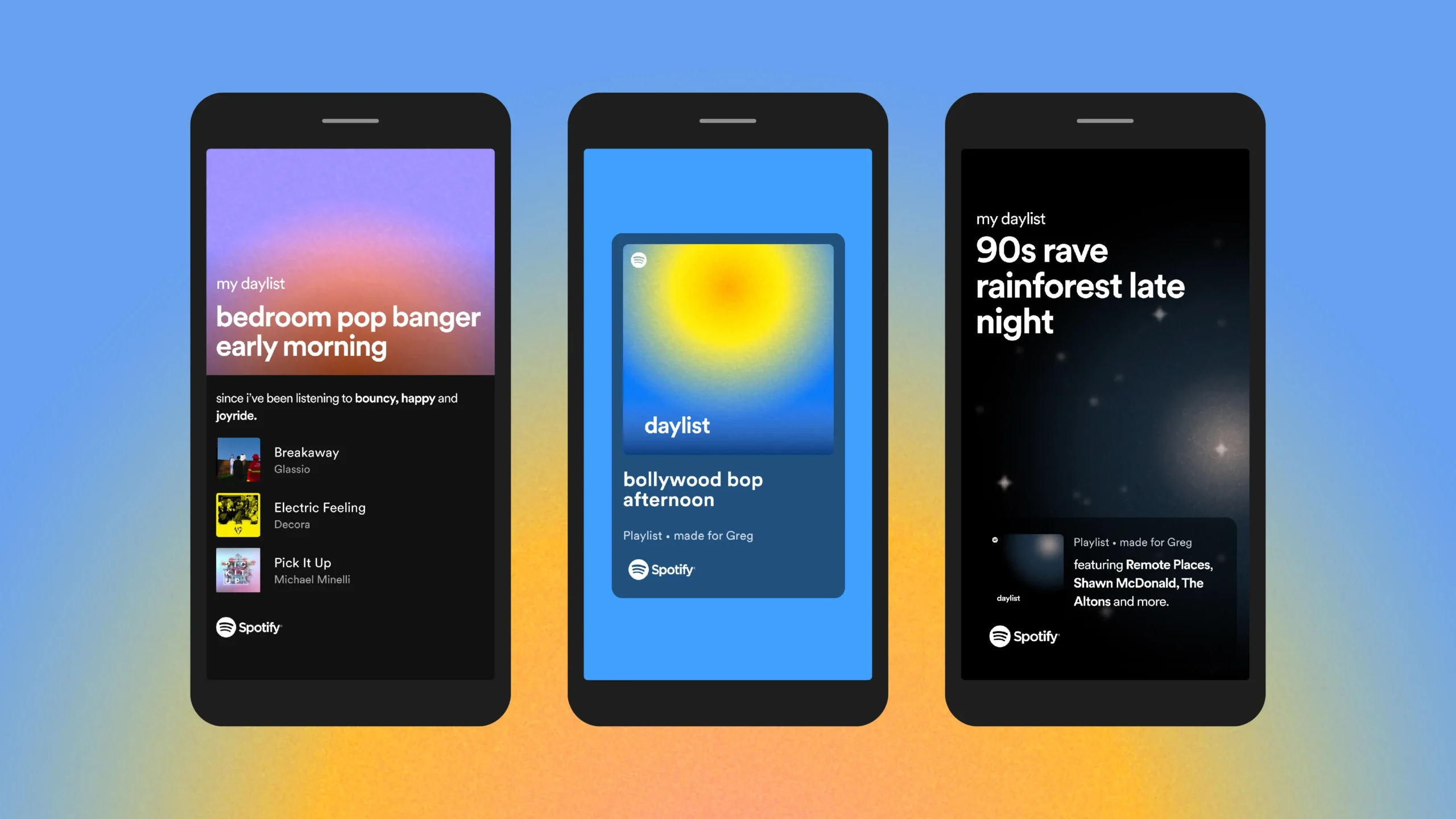
From Design Systems to Mood Systems
For years, brand guidelines dictated what things should look like. Now, mood systems define how things should feel.
Instead of rigid manuals, modern brands create living ecosystems that adjust to context, audience, and even time of day. Nike Run Club shifts its tone depending on a runner’s mindset. Streaming platforms customize visuals and sound to match each viewer’s taste.
This flexibility is not a lack of discipline. It is a new kind of coherence that mirrors human emotion and context in real time.

Tools as Creative Partners
New creative platforms have transformed how designers explore ideas. They no longer start from scratch. They start from sensation.
A designer can generate multiple layout directions, tone variations, or color harmonies in minutes. The real craft lies in guiding the process toward emotional truth.
It is not about automation. It is about curation. The goal is not speed, but alignment between feeling and purpose. The best creative work happens when technology serves intuition rather than replacing it.
Strategic Imperfection: Why Humanity Still Wins
In an era of endless digital polish, people crave authenticity. They respond to small imperfections that signal something real behind the screen.
This is why vibe design often embraces asymmetry, humor, and warmth. A slightly offbeat motion, a conversational tone, or a natural pause in an animation can create a feeling of presence that no automated process can mimic.
The goal is not perfection but emotional fidelity. Brands that design for warmth and connection rather than pure precision create lasting relationships with their audiences.
The Next Frontier: Vibe Systems and Emotional Intelligence at Scale
Imagine design frameworks that manage emotion the way current ones manage color and typography.
Future brand systems will measure tone, tempo, and audience sentiment just as precisely as they track conversions or clicks. Creative dashboards may one day recommend changes such as:
- Make this animation calmer.
- Increase visual warmth for younger audiences.
- Shift messaging from aspirational to reassuring.
This is the evolution from static design to living empathy, where creative teams tune their brands the way musicians tune instruments.
The Designer as a Conductor, Not a Technician
The modern designer’s role has changed. They are no longer enforcing visual grids but conducting emotional resonance.
The best creative professionals now think like filmmakers or music producers, mixing sensory cues, pacing experiences, and translating emotion into rhythm and tone. The future of design leadership is not about what looks good. It is about what feels right.
Feel Is the New Function
Vibe working is not a passing trend. It is a mindset that values emotion as much as execution.
For brands, it means coherence over consistency.
For users, it means experiences that feel personal and alive.
For designers, it means a renewed focus on intuition, rhythm, and flow.
The next generation of great design will not just look different. It will feel different.
In a world full of noise, feeling will always be the signal.
Contact Bluetext to learn more.
In today’s privacy-first world, brands can no longer rely on third-party cookies or opaque tracking methods to understand their audiences. Instead, forward-thinking marketers are turning to zero-party data—the information customers voluntarily share with brands. This type of data not only powers highly personalized experiences but also builds trust, loyalty, and long-term customer relationships.
Understanding Zero-Party Data
Definition and Key Characteristics
Zero-party data is any data that a customer intentionally and proactively shares with a brand. Unlike first-party data (behavioral information collected automatically) or third-party data (purchased from external sources), zero-party data is explicit, consented, and accurate because the user provides it directly.
Examples of Zero-Party Data
Brands can collect zero-party data through a variety of channels, including:
- Preference centers where users specify communication or product preferences
- Interactive quizzes or surveys
- Personalized onboarding experiences
- Subscription and loyalty program forms
- Feedback polls or content recommendations
This data is incredibly valuable because it reflects the customer’s interests, needs, and intent in their own words.
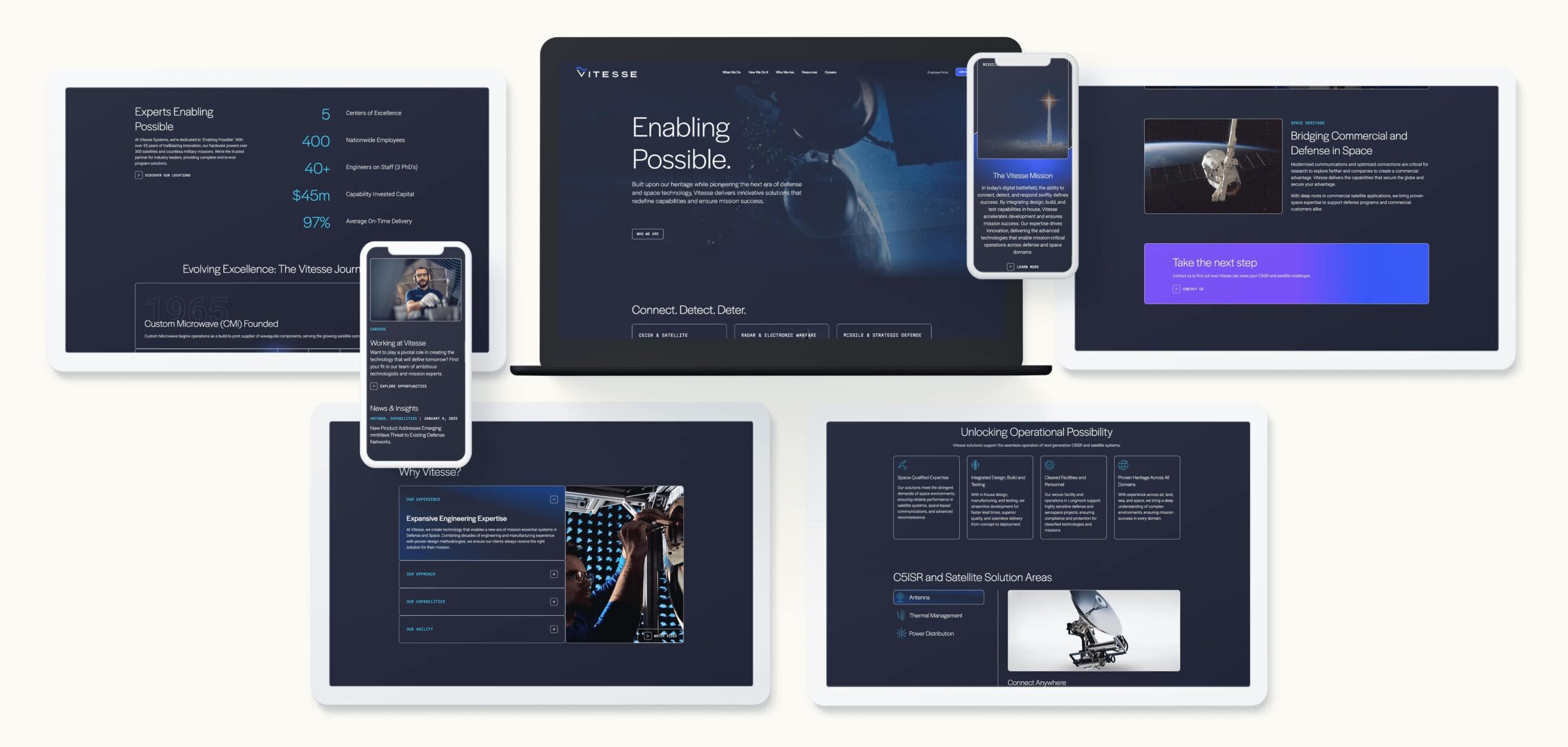
Why Zero-Party Data Matters Now
The End of Third-Party Cookies
With privacy regulations like GDPR and CCPA, and major browsers phasing out third-party cookies, marketers need alternative ways to understand and engage their audiences. Zero-party data fills this gap by providing first-hand insights without relying on intrusive tracking.
Building Trust Through Transparency
When customers willingly share information, they expect brands to respect it. Transparent data collection fosters trust and encourages ongoing engagement. Brands that honor these expectations can strengthen relationships while minimizing privacy risks.
Enabling True Personalization
Zero-party data enables precise personalization because it comes directly from the customer. Marketers can use this information to:
- Recommend products or services that truly align with preferences
- Tailor email content and messaging
- Create loyalty programs that reward meaningful behaviors

How to Capture Zero-Party Data Effectively
Offer Value in Exchange for Data
Customers are willing to share information if there’s something in it for them. Effective strategies include:
- Gated content like whitepapers or industry reports
- Personalized product or service recommendations
- Exclusive offers, events, or early access
Design Engaging Collection Methods
Interactive and enjoyable experiences increase participation:
- Quizzes that help users discover their “best fit” products
- Onboarding surveys that guide personalized experiences
- Polls and preference selections embedded in apps or websites
Prioritize Consent and Transparency
Always make it clear what data is collected and how it will be used. Provide easy options to manage preferences and honor opt-outs. Customers are more likely to share data when they feel in control.

Implementing a Zero-Party Data Strategy
Integrate with Your MarTech Stack
Connect zero-party data to your CRM, CDP, and personalization tools to ensure insights translate into actionable campaigns.
Align Across Teams
Effective zero-party data strategies require collaboration between marketing, legal, and IT teams to ensure compliance and execution.
Measure and Optimize
Track metrics like engagement, conversion rates, and content interaction to refine your approach and maximize the value of collected data.
The Future of Data-Driven Marketing
Zero-party data is more than a workaround for the decline of cookies—it’s a strategic asset that future-proofs personalization. Brands that invest in transparent, value-driven data collection will:
- Build deeper customer trust
- Deliver highly relevant experiences
- Stay ahead of privacy regulations
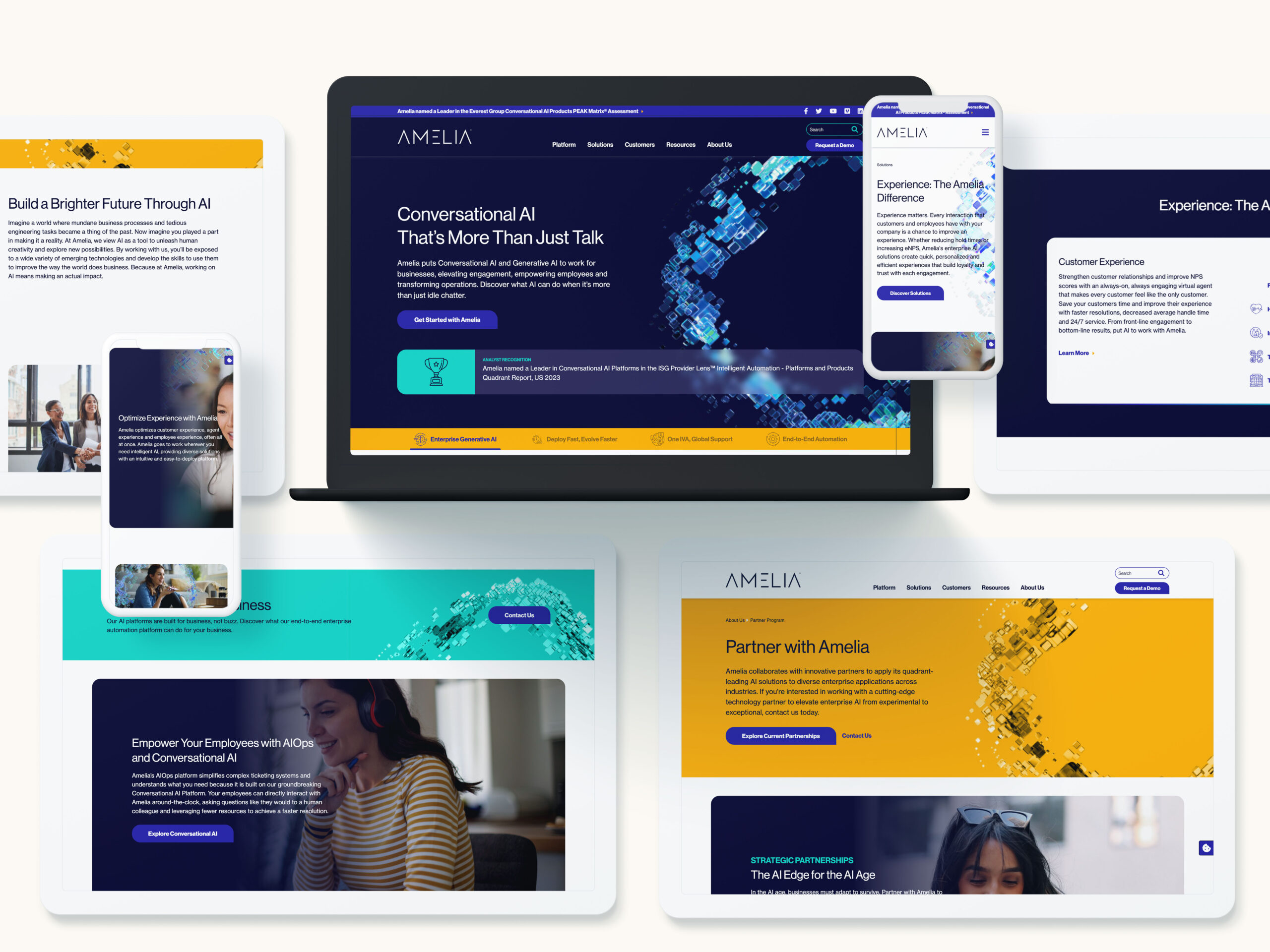
Partnering for Smart Data Strategy
Capturing and leveraging zero-party data effectively takes strategy, technology, and expertise. Bluetext helps brands design data-driven marketing frameworks that respect customer privacy while maximizing engagement and personalization.
Ready to build a future-proof data strategy?
Partner with Bluetext to design transparent, high-performing campaigns powered by zero-party data. Contact us today.
When most marketing leaders think about their brand, they picture messaging, design, campaigns, and storytelling. But there’s another, less visible dimension of brand health: web performance.
A brand’s digital presence is often the first and most consistent touchpoint for customers. If that experience is slow, inaccessible, or frustrating, it sends a message—one that undermines even the best campaigns. Web performance isn’t just a developer’s priority; it’s a marketing KPI that directly impacts trust, conversions, and long-term brand perception.
Why Web Performance Matters Beyond IT
Speed as the first brand impression
Users form an opinion about your site in seconds. A slow-loading homepage communicates inefficiency and neglect, while a fast, seamless experience signals professionalism and reliability.
Accessibility as inclusion and trust
Making your site accessible to all users—including those with disabilities—isn’t just a compliance issue. It’s a reflection of your brand’s values. Accessibility demonstrates inclusivity, empathy, and responsibility.
UX as a reflection of brand values
Clunky navigation, broken buttons, or misaligned mobile layouts create frustration. On the other hand, intuitive UX shows that you care about your audience’s time and experience—an extension of your brand promise.

The Marketing Impact of Web Performance
Performance problems don’t just frustrate users—they cost real revenue and reputation.
- Conversions suffer: Studies show that even a one-second delay in load time can drop conversions by up to 7%.
- SEO rankings decline: Google prioritizes fast, user-friendly websites in search results.
- Brand equity erodes: If customers consistently struggle to interact with your brand online, their trust declines—even if your messaging is strong.
Accessibility is also emerging as a competitive differentiator. Brands that go above and beyond to create inclusive experiences not only avoid legal risks but also earn loyalty from a wider audience.
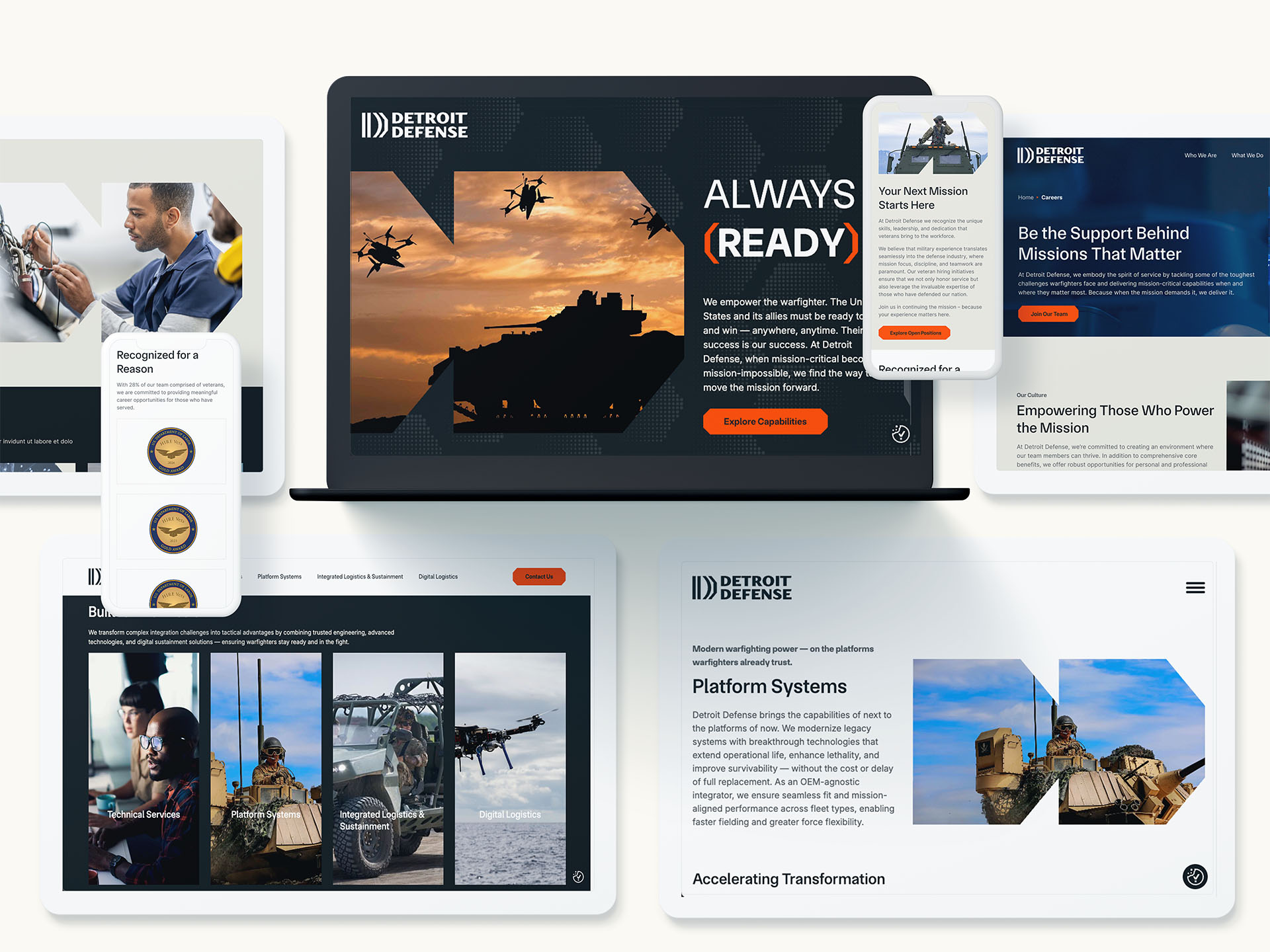
Key Web Performance Metrics Marketers Should Track
You don’t need to be a developer to understand the metrics that matter most:
- Core Web Vitals
- Largest Contentful Paint (LCP): How quickly the main content loads.
- First Input Delay (FID): How responsive the page feels.
- Cumulative Layout Shift (CLS): How stable the visuals are as the page loads.
- Accessibility Scores
- Benchmarked against WCAG standards, these measure how inclusive and usable your site is.
- Engagement Metrics
- Bounce rate, time on page, and conversion rates—all of which improve when performance is strong.

Turning Performance Into a Marketing KPI
Marketing leaders should elevate performance metrics alongside more traditional KPIs like impressions or conversions.
- Integrate into dashboards: Include speed, accessibility, and UX data in your regular brand reporting.
- Collaborate with dev teams: Marketing and development should align on the shared goal of delivering seamless experiences.
- Frame it for executives: Position performance as a direct driver of brand trust and customer loyalty.
Best Practices for Building a High-Performance Brand Experience
Performance improvements often come down to consistent, practical steps:
- Optimize images, video, and scripts for faster load times
- Adopt responsive, mobile-first design
- Incorporate accessibility from the design stage onward
- Continuously monitor with tools like Google PageSpeed Insights or Lighthouse
- Test frequently—small changes can reveal big wins
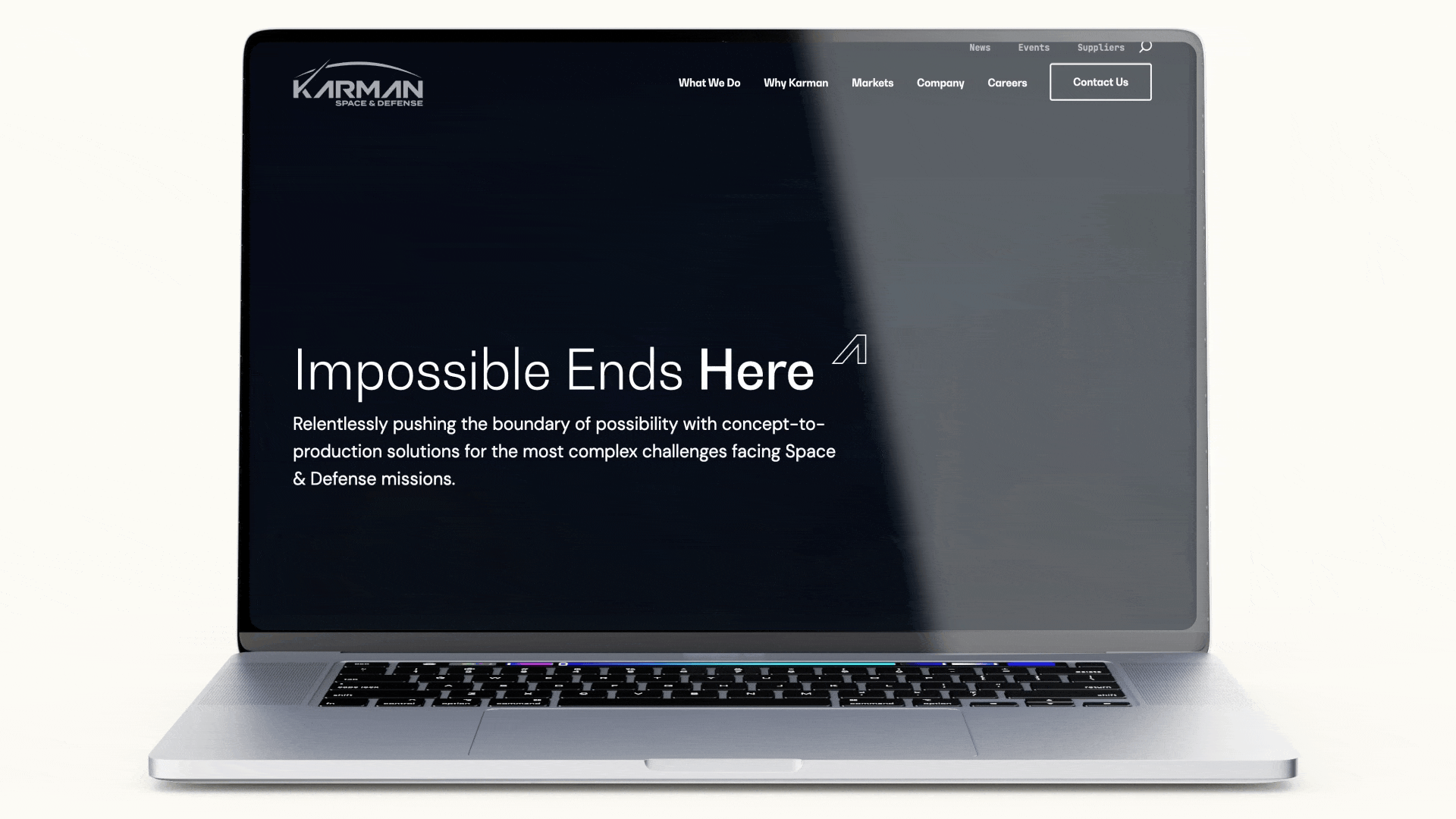
Bringing It All Together
Web performance is no longer a background concern for IT—it’s a frontline brand metric. Speed, accessibility, and UX shape how your audience perceives you before they even read a headline or click a button.
For marketing leaders, the challenge and opportunity are clear: make performance part of your brand DNA. Doing so not only boosts conversions but also reinforces trust, loyalty, and long-term brand value.
Looking to make your digital brand experience faster, more accessible, and more impactful? Contact Bluetext to turn performance into a brand advantage.
In today’s B2B world, buyers expect more than competitive pricing and robust features—they demand seamless, intuitive digital experiences. A poorly designed platform or cumbersome form can turn even the most interested prospect away, while a frictionless experience can position your brand as modern, professional, and trustworthy. Paying specific attention to your user experience (UX) is no longer optional; it’s a strategic differentiator that can shape how your brand is perceived in the market.
From microsites to enterprise platforms, frictionless UX allows B2B brands to capture attention, build trust, and drive conversions. In this post, we’ll explore why UX is the new competitive edge in B2B marketing and how companies can leverage it to stand out.
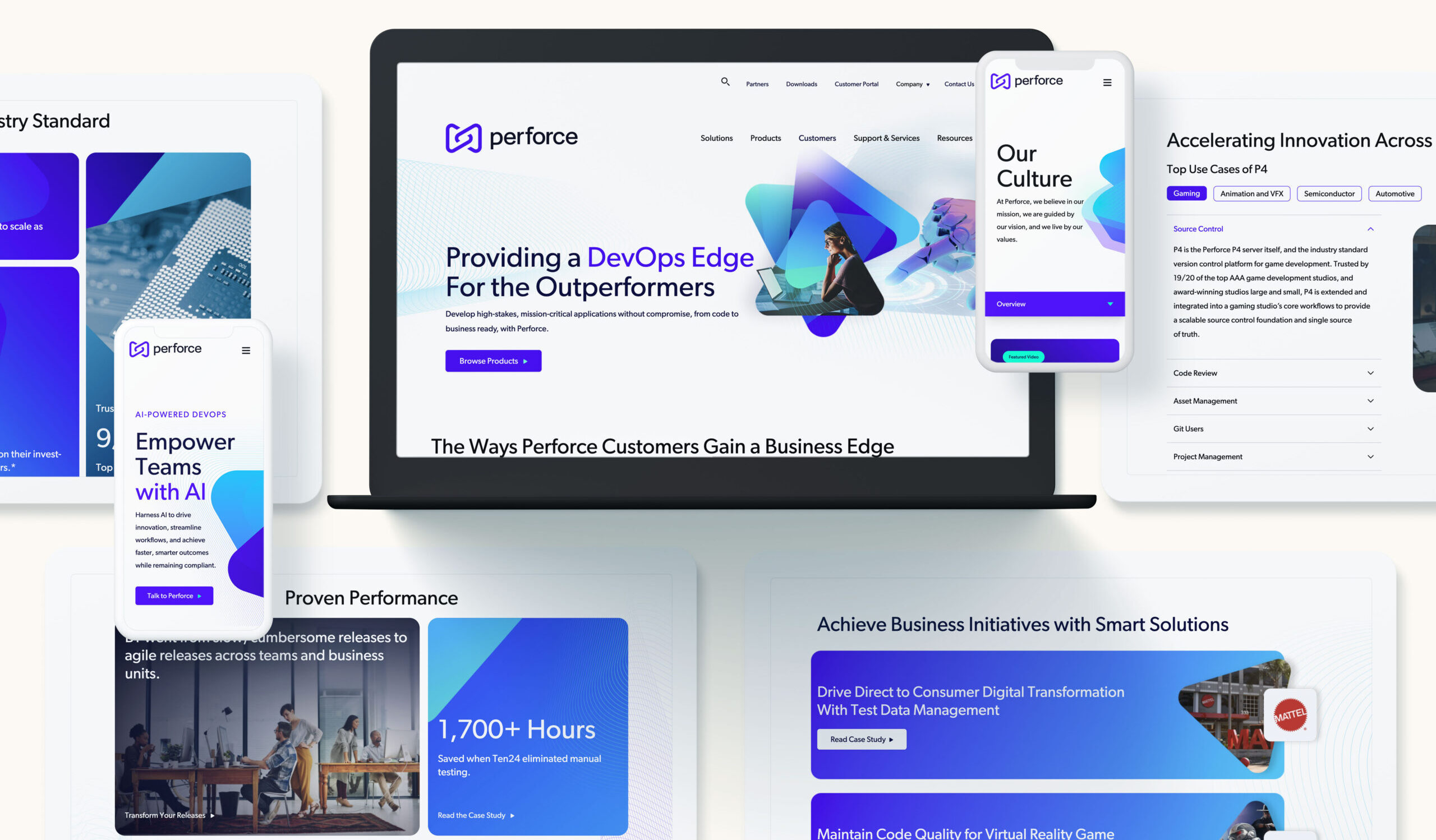
Why UX Matters in B2B Today
The expectations of B2B buyers have evolved dramatically in the last decade. Business decision-makers now compare digital interactions in professional contexts with experiences they have in their personal lives. Slow-loading pages, confusing navigation, or lengthy forms can result in immediate disengagement.
Statistics show that over 70% of B2B buyers abandon websites that are difficult to navigate or too slow to load. A clunky experience is more than an inconvenience—it can directly impact lead generation, conversion rates, and long-term brand perception.
Moreover, friction in the user journey signals inefficiency and unprofessionalism, even if the product itself is top-tier. Conversely, companies that prioritize B2B user experience demonstrate thoughtfulness, credibility, and attention to detail. These subtle cues influence trust and can tip the scales in competitive purchasing decisions.
Friction Points That Hurt B2B Conversions
Understanding where friction occurs is the first step toward creating a seamless experience. Common pain points include:
- Overly Complex Forms: Lengthy, confusing forms discourage completion and lead to lost leads.
- Slow Microsites: Microsites are often designed for campaigns or events, but poor performance can damage the brand’s reputation.
- Disjointed Platform Navigation: When users can’t intuitively find what they need, engagement drops and frustration grows.
- Inconsistent Branding Across Touchpoints: Visual and messaging inconsistencies between platforms, emails, and microsites can create confusion and erode trust.
Each of these friction points reduces engagement and can silently cost revenue. B2B buyers are increasingly unforgiving of digital obstacles, making frictionless UX a critical element of brand strategy.

Frictionless UX as a Differentiator
While price and features have historically been the primary differentiators in B2B markets, UX is emerging as a decisive factor. A frictionless experience signals professionalism, innovation, and customer-centricity—qualities that buyers value alongside product capabilities.
Imagine two SaaS platforms with similar features and pricing. One has a seamless onboarding experience, intuitive navigation, and consistent branding across its website, forms, and dashboard. The other feels clunky, inconsistent, and slow. Even if both solutions deliver the same results, the user is far more likely to adopt and advocate for the platform with better UX.
In effect, UX can amplify your other differentiators, making it as important as pricing, product features, and customer service. For modern B2B brands, frictionless UX is a strategic lever for differentiation.
Designing for a Frictionless B2B Experience
Creating a seamless digital experience requires intentional design across every touchpoint. Key principles include:
- Simplicity: Remove unnecessary steps and streamline processes. A clean, focused interface reduces cognitive load.
- Speed: Optimize page load times and form interactions to prevent frustration and abandonment.
- Intuitive Navigation: Ensure users can find critical information quickly and naturally.
- Consistent Branding: Align visual design, messaging, and tone across platforms, microsites, and forms.
- Responsive Design: Experiences must work seamlessly across devices, from desktops to smartphones.
In addition, B2B brands should consider microsites and forms as critical touchpoints rather than afterthoughts. Campaign microsites should reflect the main site’s brand while delivering a frictionless journey tailored to the audience. Forms should balance lead capture with usability, asking only for essential information at the right moment.
By implementing these principles, companies can turn digital interactions into competitive advantages, rather than mere transactional steps.
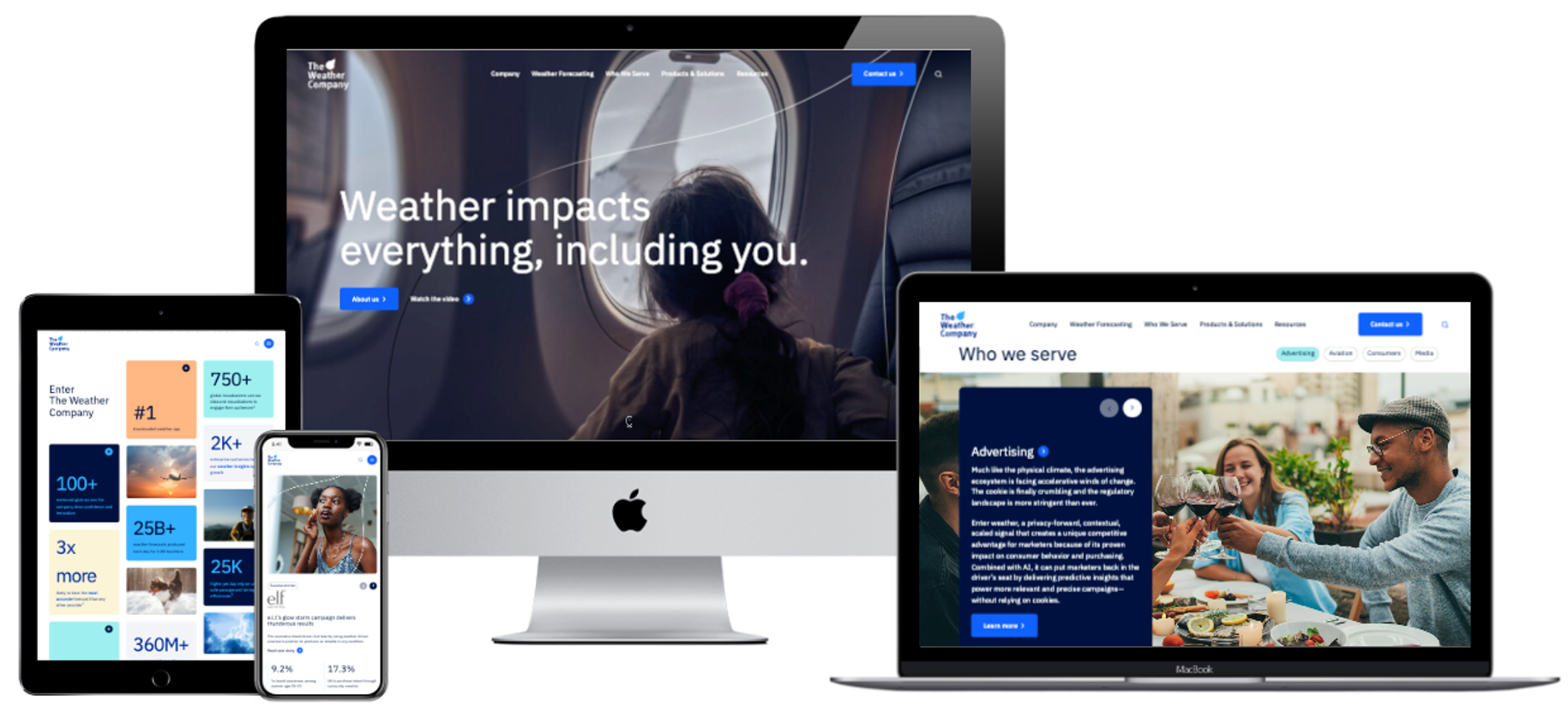
Measuring UX Success in B2B
To ensure your UX efforts are driving results, measurement is essential. Key metrics include:
- Conversion Rates: Are users completing forms, signing up for demos, or making purchases?
- Form Completion Rates: High abandonment indicates friction points.
- Platform Engagement: Track session duration, click paths, and feature adoption.
- Net Promoter Score (NPS) and Customer Feedback: Qualitative insights reveal how users perceive your experience.
These metrics allow teams to iterate and refine digital experiences continuously. By embedding UX evaluation into B2B marketing and sales strategy, organizations can quantify the impact of frictionless design on revenue and brand perception.
Looking Ahead: UX as a Strategic Lever
The future of B2B UX is tied to personalization, AI-driven interfaces, and predictive design. Brands that prioritize frictionless experiences now are positioning themselves for long-term differentiation. Companies that fail to invest in UX risk being perceived as outdated or inefficient, regardless of how compelling their products or pricing may be.
By making UX a central element of B2B differentiation, organizations can improve conversion rates, enhance brand perception, and create loyal advocates among buyers who expect professional, intuitive experiences.

Take the Next Step: Make Your UX a Differentiator
In the modern B2B landscape, user experience is no longer a secondary consideration—it’s a powerful lever for differentiation. From digital platforms to campaign microsites and lead capture forms, frictionless UX can elevate your brand, increase conversions, and strengthen customer loyalty.
When people talk about “brand,” they often think first of logos, colors, or snappy taglines. But a brand is much bigger than any single touchpoint—it’s the sum of perceptions, experiences, and promises you deliver over time.
Still, there’s no getting around it: your website is often where that brand has to prove itself first.
Your website may not be your brand in its entirety. But for many customers, it’s the first meaningful encounter they’ll have with it. And first impressions are hard to shake.
How do you ensure your bold brand strategy doesn’t fall apart at the moment it matters most? Let’s explore how to bridge the gap between big-picture strategy and polished digital execution.
Your Brand Lives Beyond Your Website
A strong brand isn’t just a pretty website. It’s your company’s purpose, promise, and personality brought to life in ways your audience understands and trusts.
Your brand shows up in:
- How you serve customers.
- What you stand for.
- The stories you tell.
- The tone you use everywhere, from social media to sales calls.
A website alone can’t be your entire brand. It can’t deliver your customer service. It can’t stand in for your product quality. And it certainly can’t fix a muddled positioning strategy behind the scenes.
That said—it’s often the first place people expect to see all of that come together. If your site doesn’t reflect your brand clearly and convincingly, you’re starting every conversation at a disadvantage.
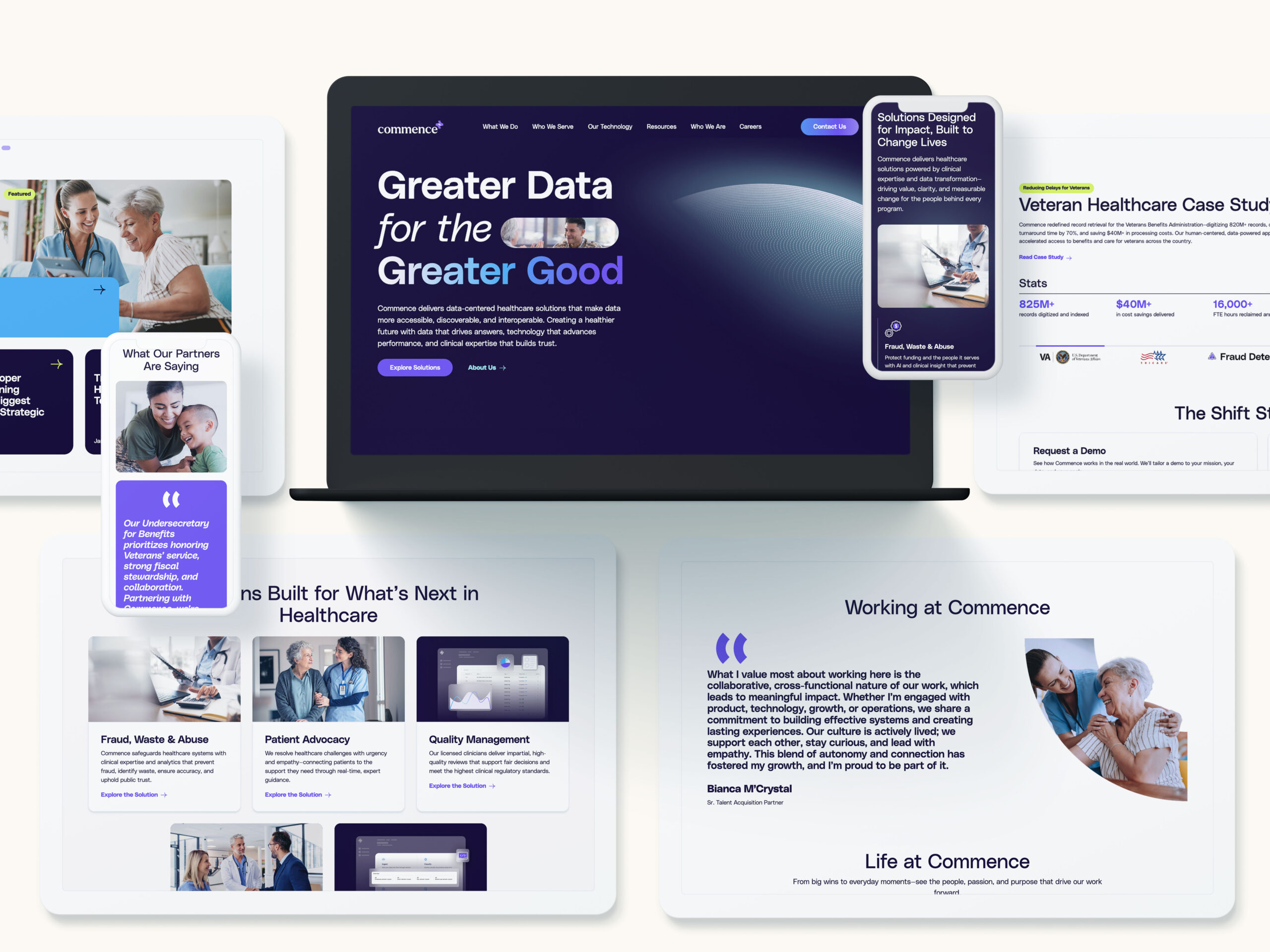
Why Your Website Still Matters More Than Ever
We live in a world of relentless digital first impressions. Studies suggest people form judgments about a website in as little as 50 milliseconds.
Think about that: before they’ve read your mission statement or learned about your product, they’re forming opinions about your brand.
- Trustworthiness
- Credibility
- Relevance
- Professionalism
Your website has to deliver all of that at a glance.
Even the strongest brand strategy can be undermined by poor execution online. It doesn’t matter how great your positioning sounds in the boardroom if your website feels sloppy, confusing, or out of sync with your brand voice.
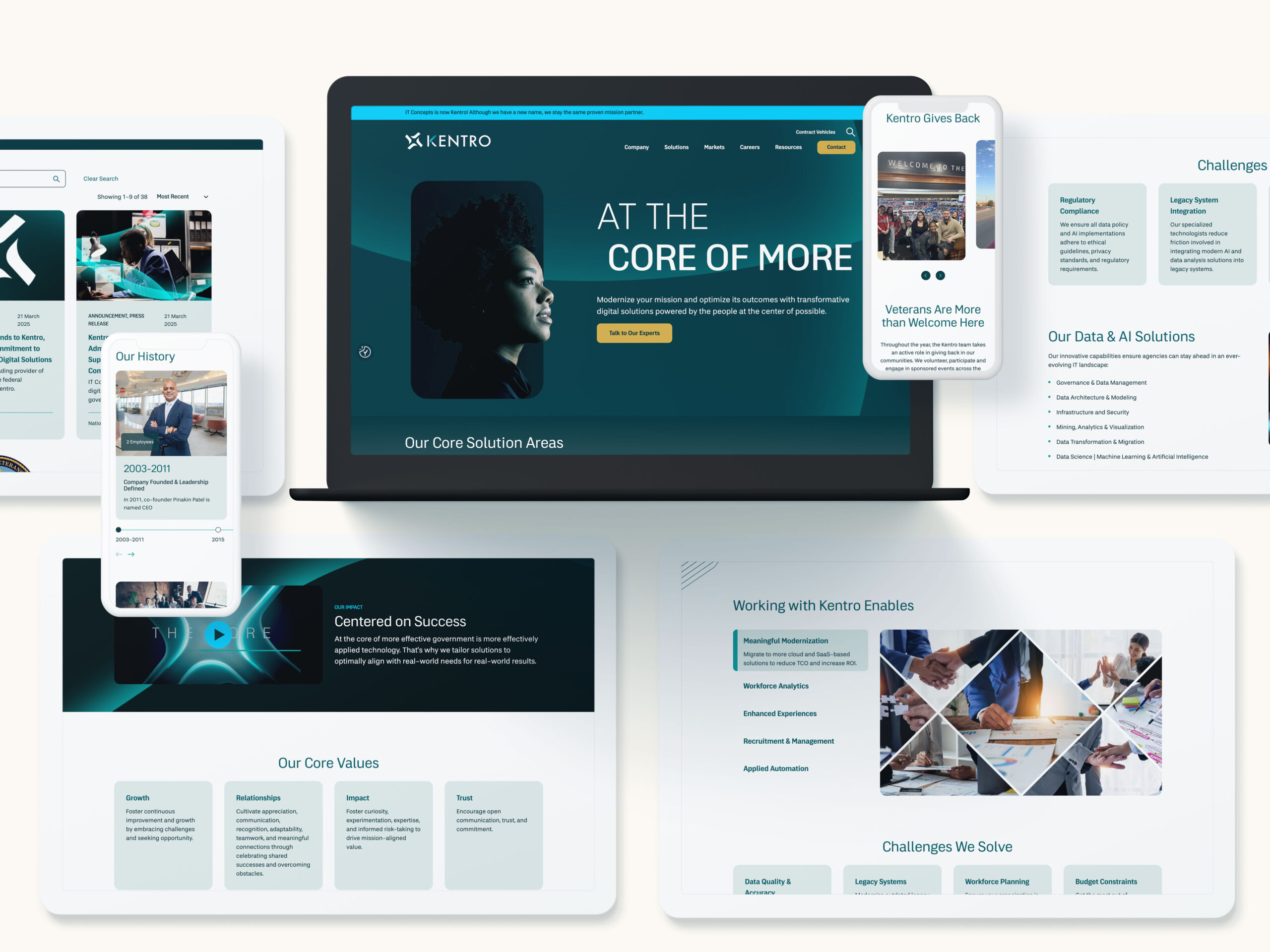
Common Gaps Between Brand Strategy and Digital Execution
This disconnect is more common than you might think. A few telltale signs:
- Tone mismatch: Brand guidelines say “friendly and approachable,” but the copy reads like legal boilerplate.
- Generic design: A safe, cookie-cutter template that could belong to any company in the industry.
- Confusing navigation: Strategic pillars buried behind obscure menu labels.
- Unclear messaging: Buzzwords instead of real value propositions.
These gaps happen because it’s easy to treat brand strategy and website design as separate efforts. But they’re not. Your site is the place where your brand proves itself.
Bridging the Gap: Practical Tips
How can you make sure your bold brand strategy doesn’t get lost in translation?
Here are some proven ways to align strategy and execution:
- Translate personality into UX: If you want to be seen as premium, prioritize elegant simplicity. If your brand is playful, let that inform micro-interactions and visuals.
- Align copywriting with brand voice: Your web copy should sound like you, not just like “professional corporate website #374.”
- Use visual systems that scale: Develop a design system that extends from your site to social, email, and beyond. Consistency breeds trust.
- Prioritize clarity over complexity: No matter how strategic your messaging is, if users can’t find what they need quickly, they’ll bounce.
- Test with real users: Don’t just ask your internal team. Get feedback from people who don’t know your brand inside out.
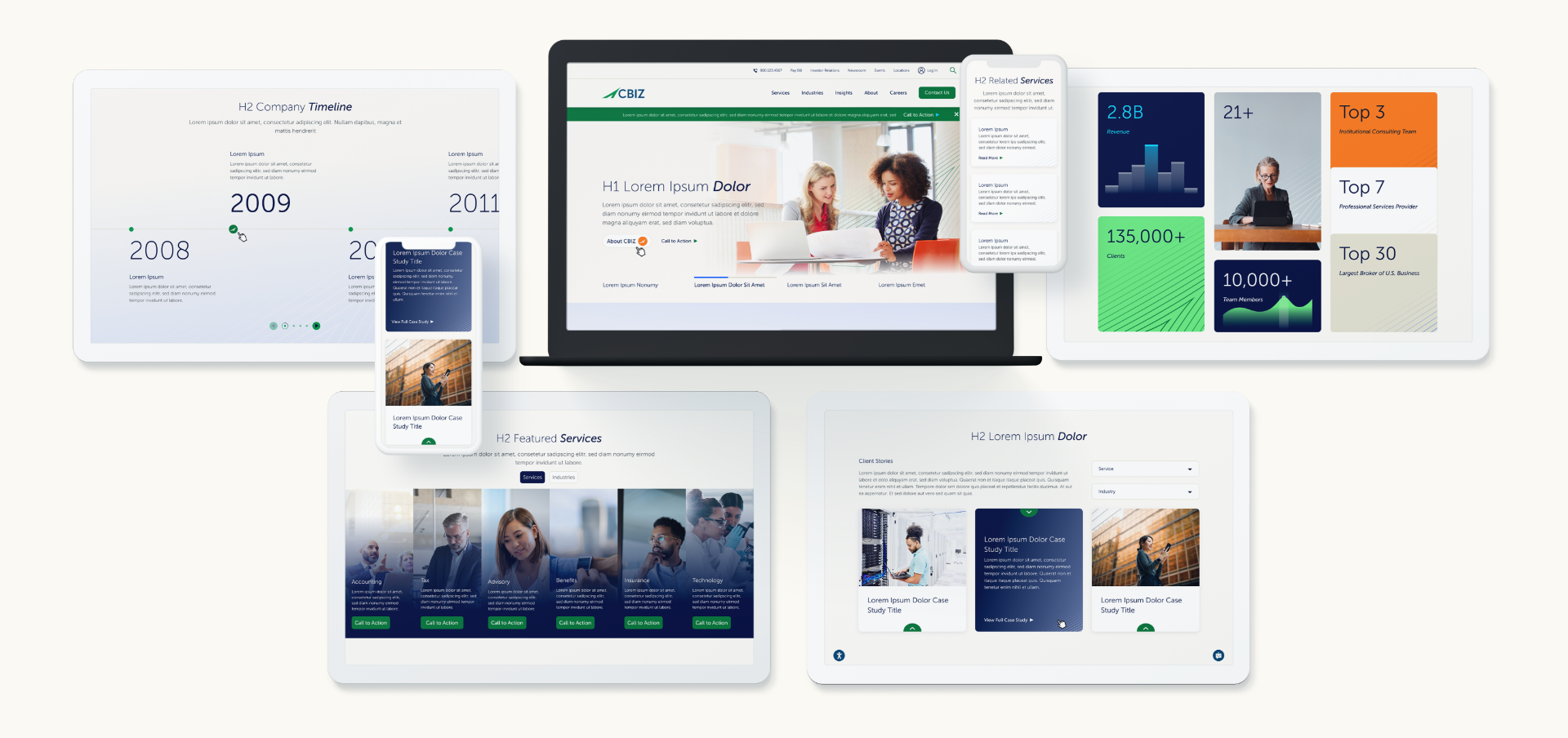
Avoiding the Trap of “Pretty But Hollow” Sites
Many companies get fixated on making their site look “modern” or “impressive” without asking whether it’s actually on-brand.
A gorgeous site that doesn’t communicate your differentiators or support your customer journey is like a beautiful store with no helpful staff inside.
Your website shouldn’t just be decoration. It should:
- Convey your value clearly.
- Reinforce your unique position in the market.
- Help visitors take the next step, whether that’s contacting sales or exploring resources.
The Role of Collaboration in Getting It Right
Bridging this gap isn’t just about design or copy—it’s about people working together.
Often, brand strategy lives with one team while the website project sits with another. That creates silos that lead to inconsistency.
Best practices to avoid this:
- Joint workshops: Get branding, marketing, and digital teams in the same room early.
- Shared guidelines: Build brand voice and visual guidelines that include digital specifics.
- Feedback loops: Review work at multiple stages to ensure alignment.
When these teams collaborate from day one, you don’t just get a better website—you get a better brand experience.

Making the Right First Impression
Your website isn’t your brand in full. But it is the moment your brand often has to earn trust.
If your brand strategy is the promise, your website is where you start delivering on it.
At Bluetext, we help brands close that gap—from defining a bold, authentic strategy to executing it seamlessly online.
If you’re ready to make sure your website reflects your brand at its best, get in touch with us.
As brands expand their reach across borders, the challenge isn’t just going global—it’s staying cohesive while doing it. Because international growth doesn’t mean one-size-fits-all messaging. It means speaking directly to diverse audiences, in different languages, across different cultures—without losing what makes your brand recognizable.
The trick? Localization at scale: building systems that flex for regional nuance without fracturing your brand.
The Risks of Going Global Without a Strategy
We’ve seen it happen—fast-growing companies push into new regions, and suddenly their brand looks and feels different everywhere. The French website has a different tagline. The German social campaign uses off-brand colors. The APAC product sheet calls the same feature by a completely different name.
Without a defined localization strategy, global marketing becomes a game of telephone—with inconsistent messaging, diluted visuals, and confused customers.
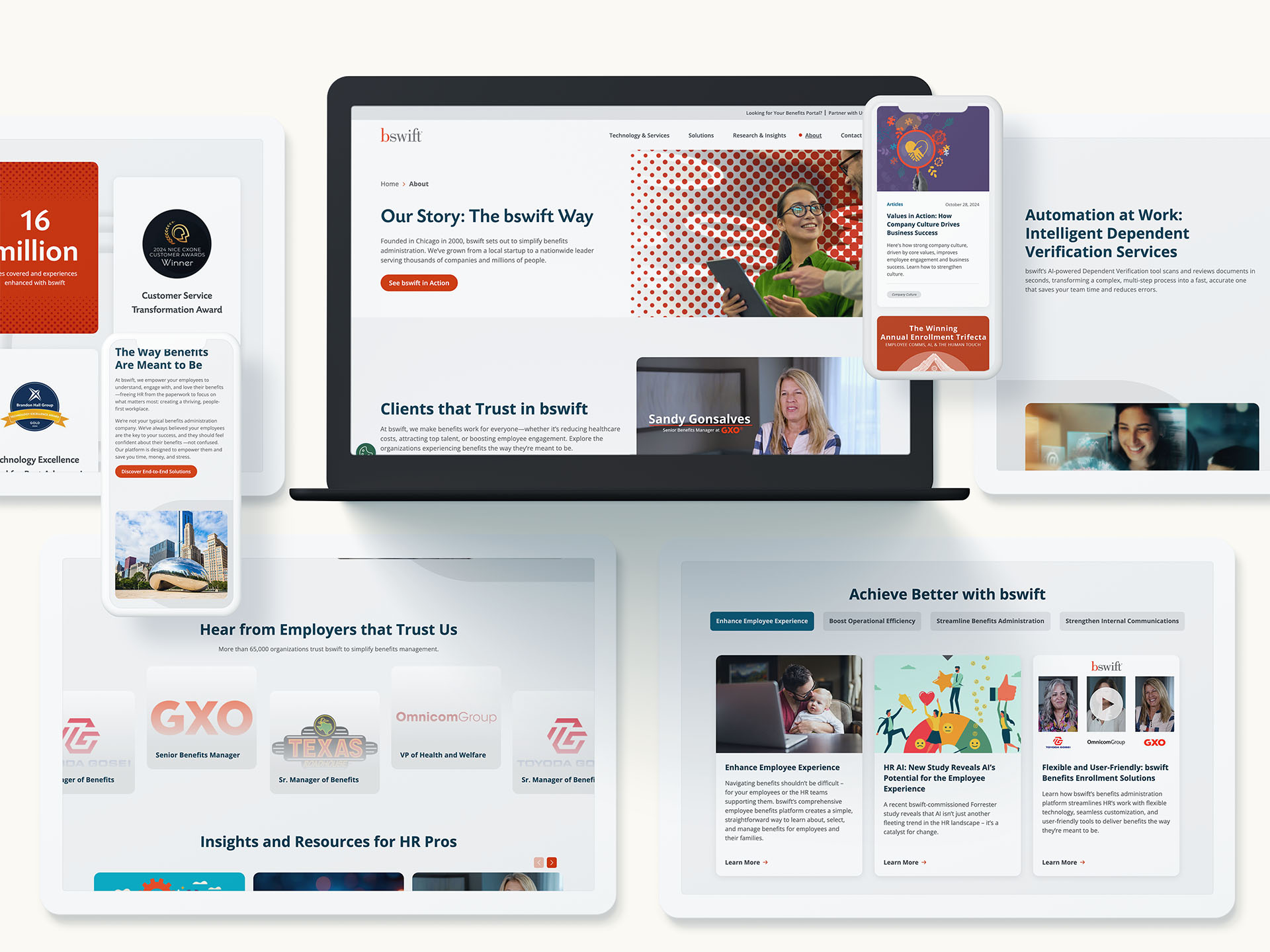
The Brand Consistency Challenge
Brand consistency is about more than logos and fonts. It’s about:
- Unified messaging pillars
- A shared tone of voice
- Consistent product naming conventions
- Visuals that reinforce brand DNA across all platforms
But this consistency gets complicated fast when:
- Teams in different regions are working in silos
- Local agencies interpret branding through their own lens
- Translation is treated as a final step, not a foundational consideration
In short, global expansion without a system invites fragmentation.
A Framework for Scalable Localization
To scale localization without losing control, brands need a structured but flexible framework. Here’s how leading companies do it:
1. Centralized Brand Guidelines, with Built-In Flexibility
Develop a global brand system that clearly defines:
- Core identity elements (logo usage, typography, color palettes)
- Voice and tone rules
- Messaging frameworks and brand pillars
But don’t stop there—include examples of how these can adapt for cultural relevance in local markets.
2. Establish Global vs. Local Ownership
Clarify what’s owned centrally (like key messaging, product naming, or logo integrity) versus what can be modified regionally (like calls to action, visuals, or campaign headlines). This helps local teams move fast without violating global standards.
3. Build a Cross-Functional Governance Model
Set up a process where brand, regional marketing, and localization teams can collaborate, review creative, and ensure alignment across launches.
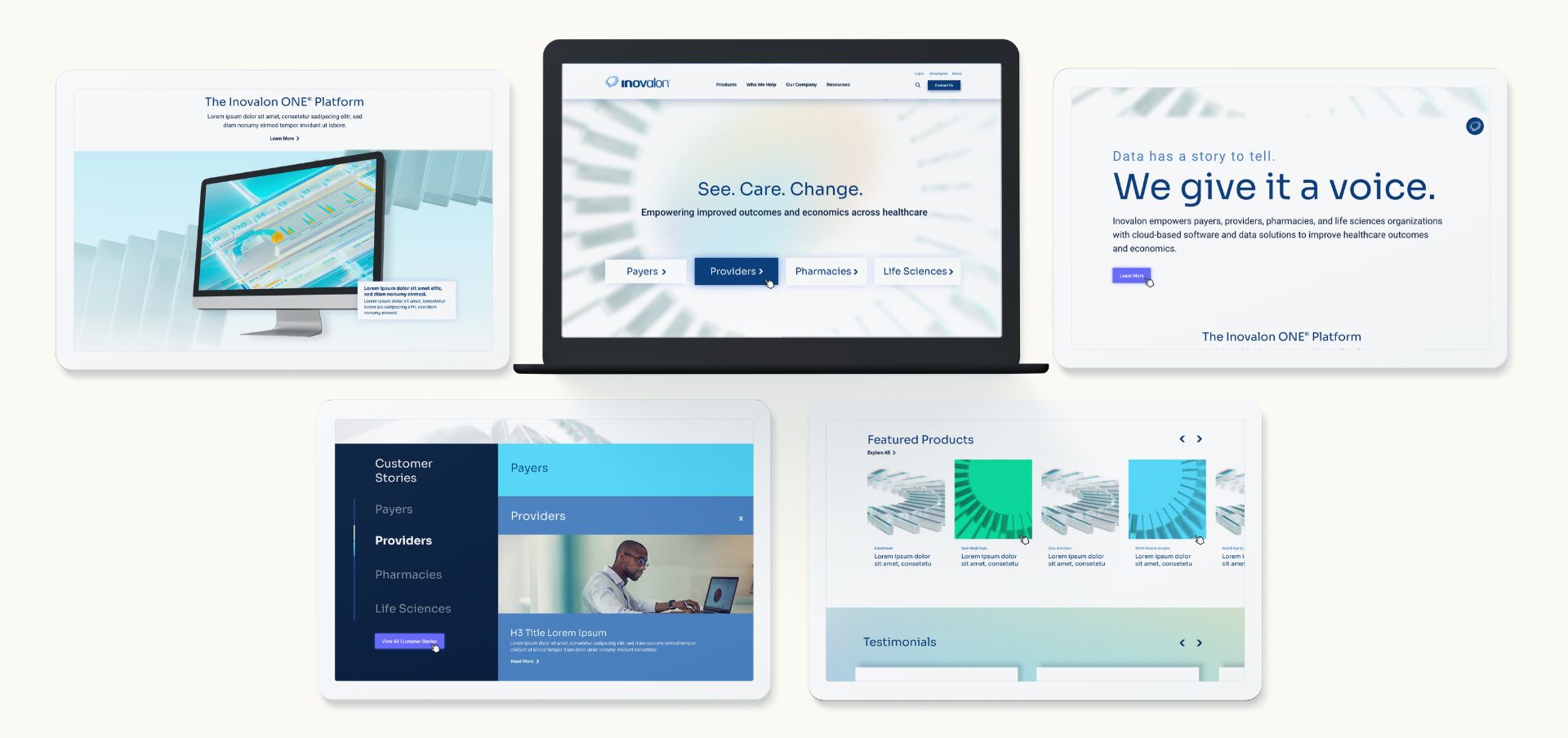
Cultural Relevance Is More Than Translation
Successful localization goes beyond language. It requires cultural fluency—understanding what resonates with each audience.
Consider:
- Adjusting tone and formality for regional expectations
- Rewriting—not just translating—taglines, CTAs, or value propositions
- Avoiding idioms, humor, or visuals that don’t translate across borders
The goal isn’t to replicate. It’s to reinterpret—in a way that maintains the core idea while landing more effectively in-market.
Creative + Operational Best Practices
Localization at scale requires both process and creativity. Here’s how to support both:
- Design reusable creative systems: Create modular templates for web, email, paid media, and social assets that local teams can customize within guardrails.
- Use a global content management system (CMS): A CMS that supports multi-language site versions helps centralize oversight while enabling regional flexibility.
- Invest in a DAM and translation management system (TMS): Organize brand assets and enable consistent translations that are version-controlled, searchable, and easily distributed.
- Train your teams: Provide onboarding and ongoing brand training for regional marketers, translators, and agency partners.
- Monitor and optimize: Use analytics to assess how localized content performed by region—and feed insights back into your system.
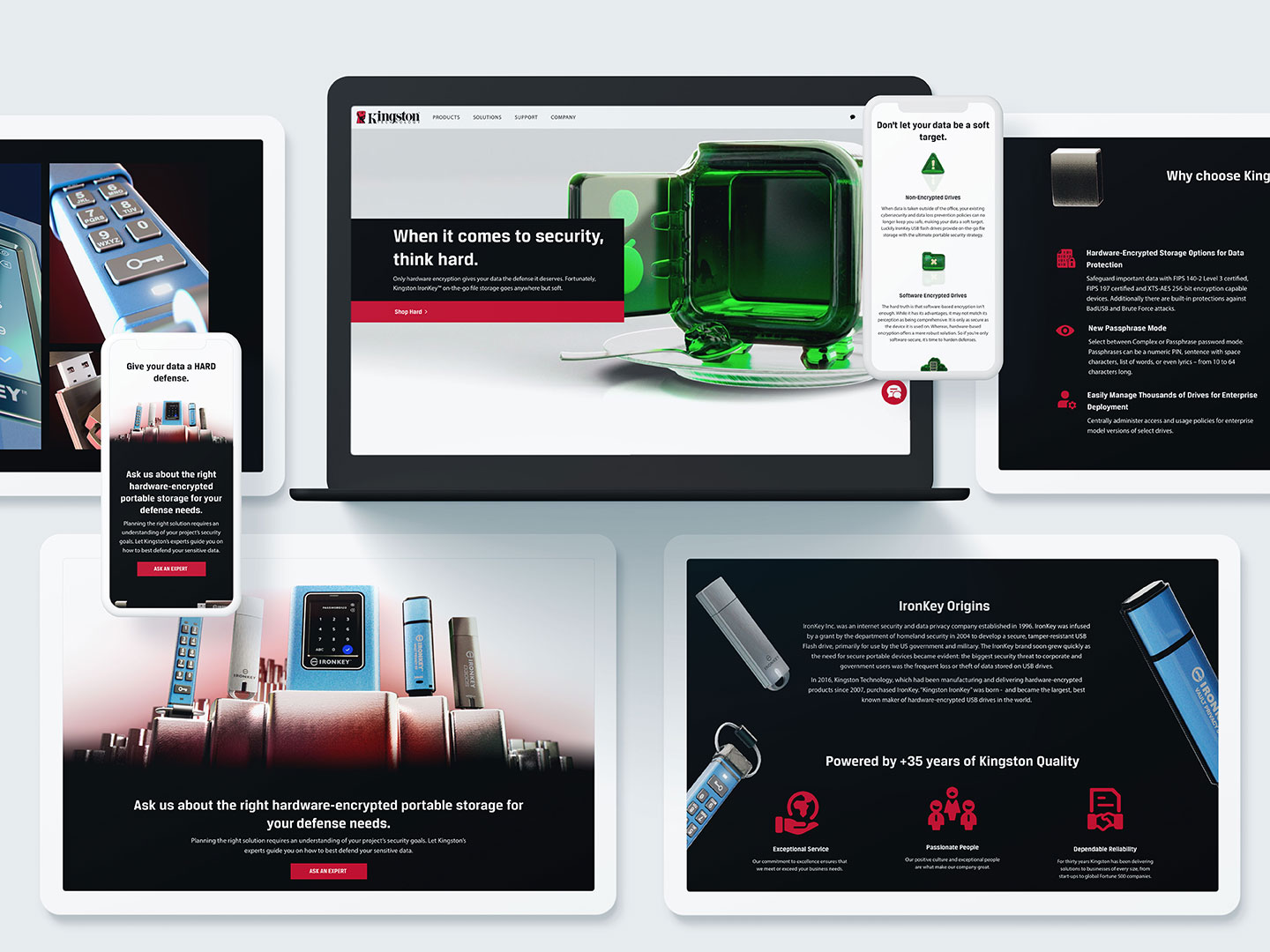
The Payoff: A Brand That Travels Well
When you balance consistency with cultural nuance, your brand becomes:
- More trustworthy – Familiarity builds credibility.
- More relatable – Regional teams feel empowered to connect with local audiences.
- More agile – Launches become faster and more repeatable, with fewer missteps.
It’s not just about protecting your brand—it’s about amplifying it across every market you touch.
Need a Global Brand That Feels Local Everywhere?
Bluetext helps brands develop scalable localization strategies that maintain identity while enabling adaptation. From building global campaign toolkits to implementing multi-language websites and brand governance systems, we help you stay consistent—without being rigid.
Contact us to learn how we can help your brand speak the local language, at scale.